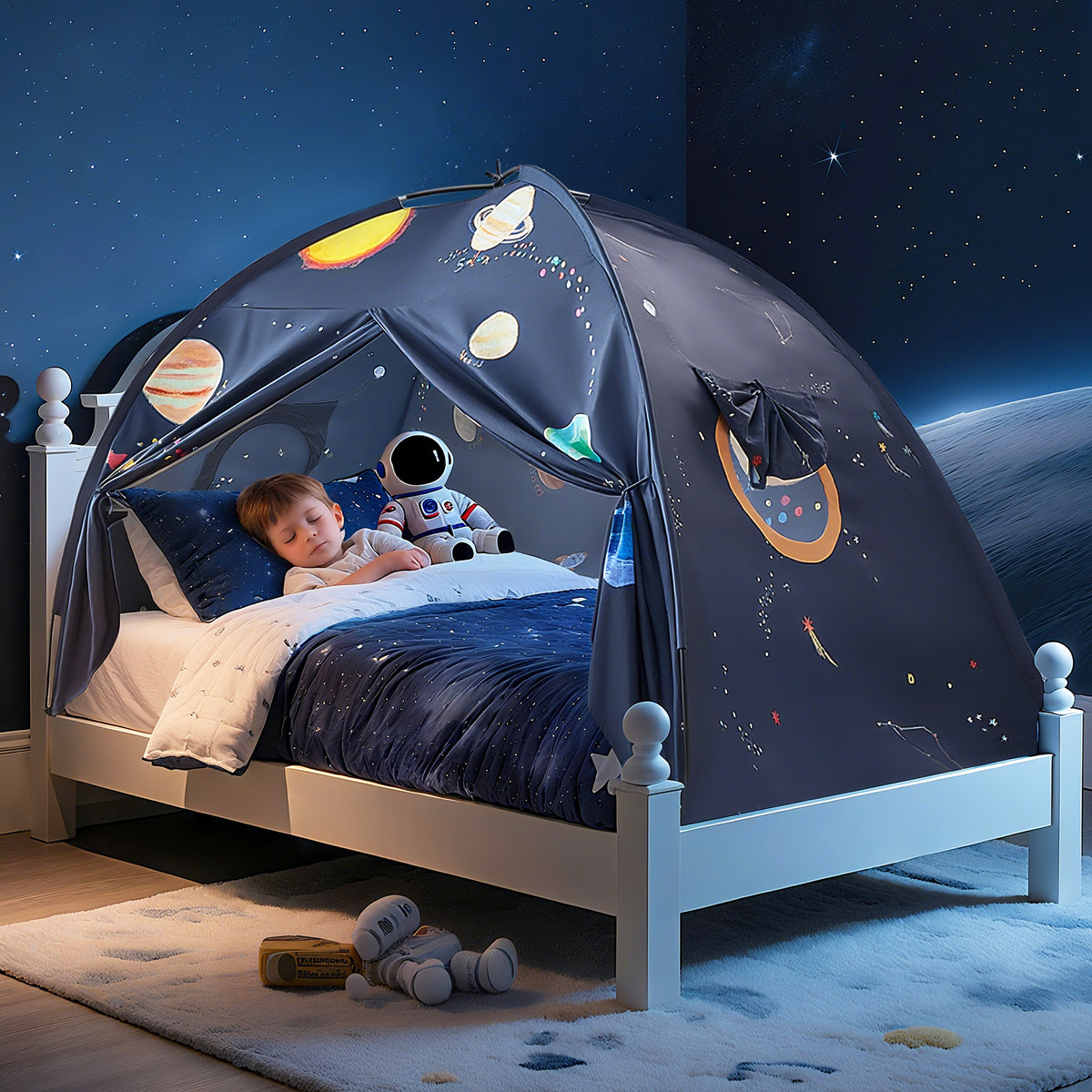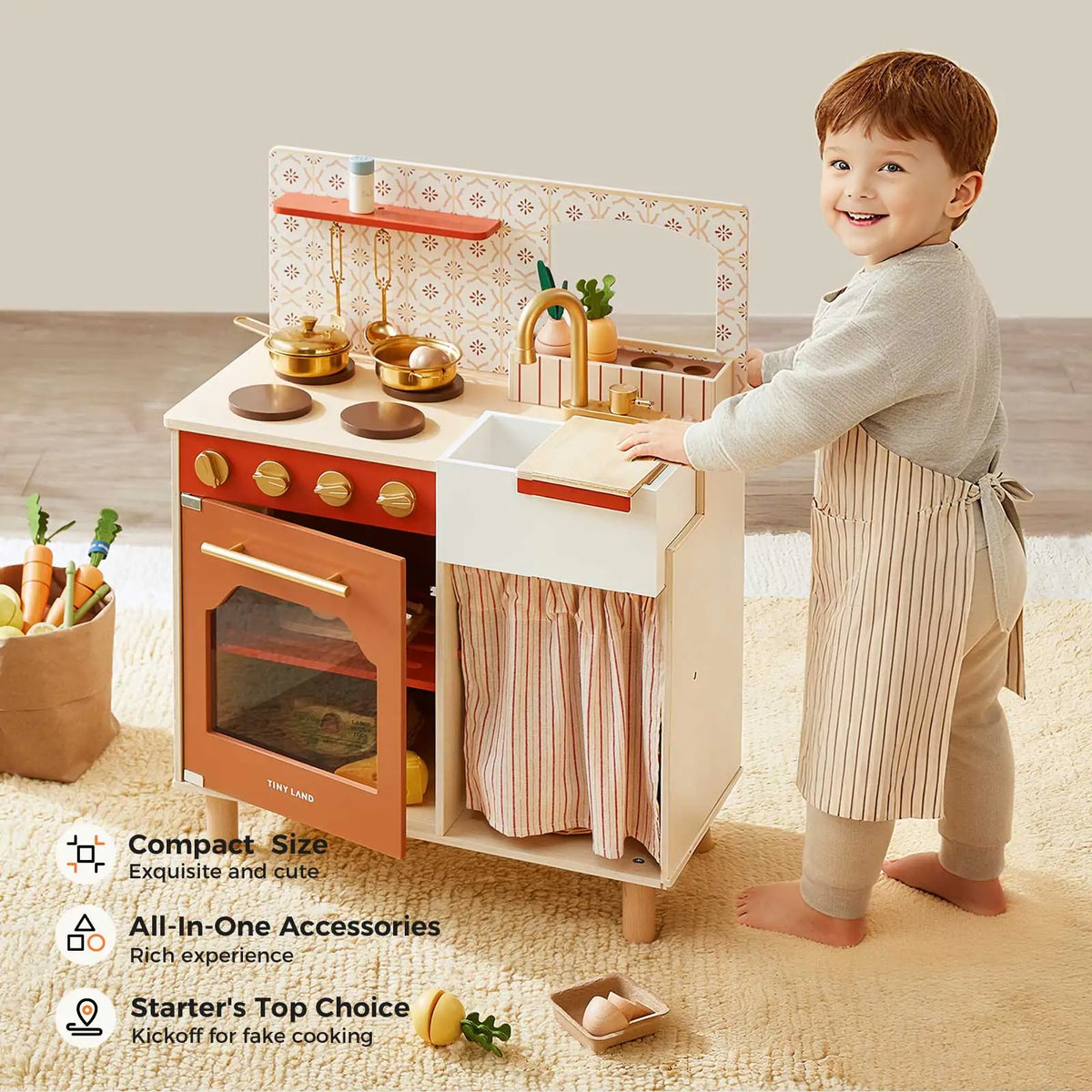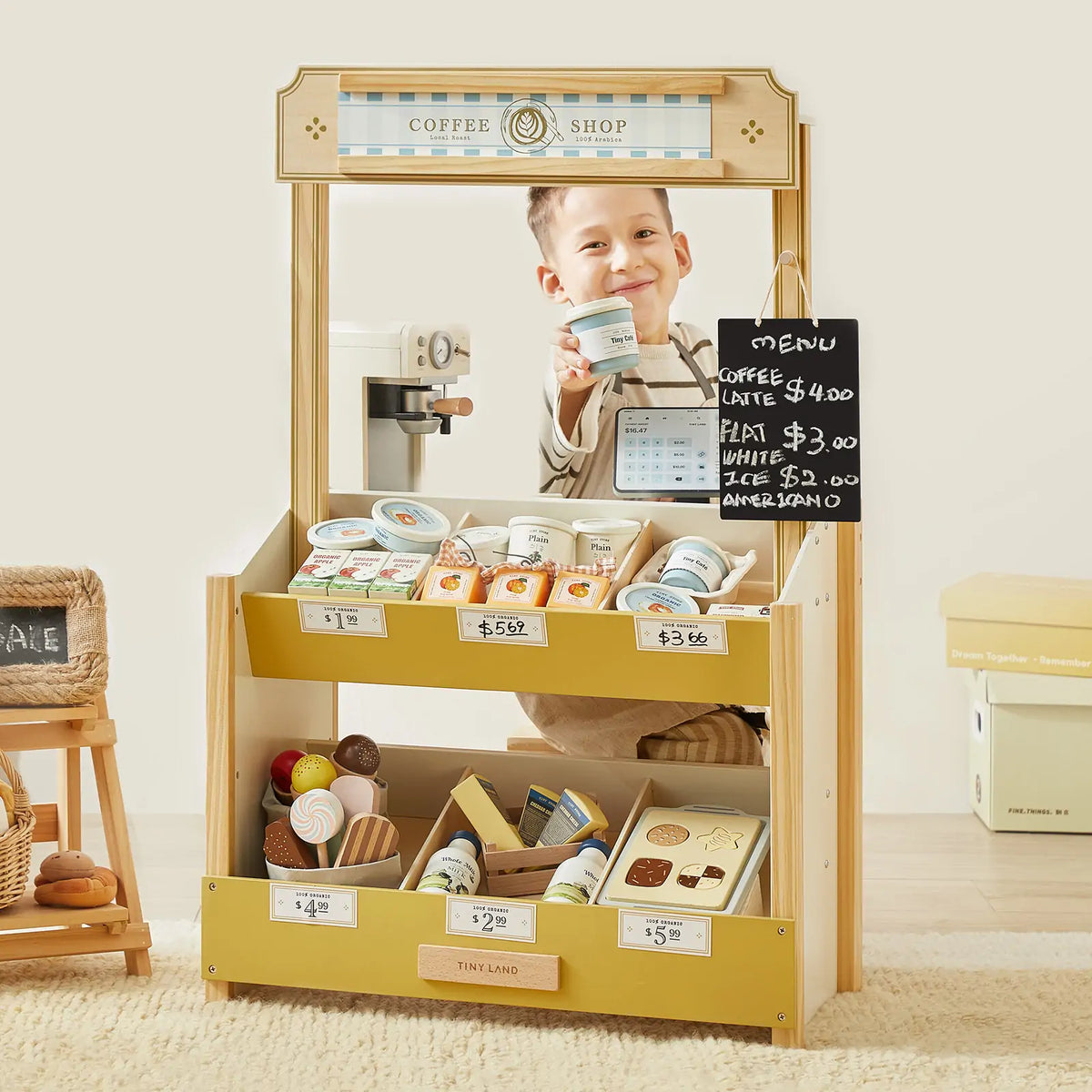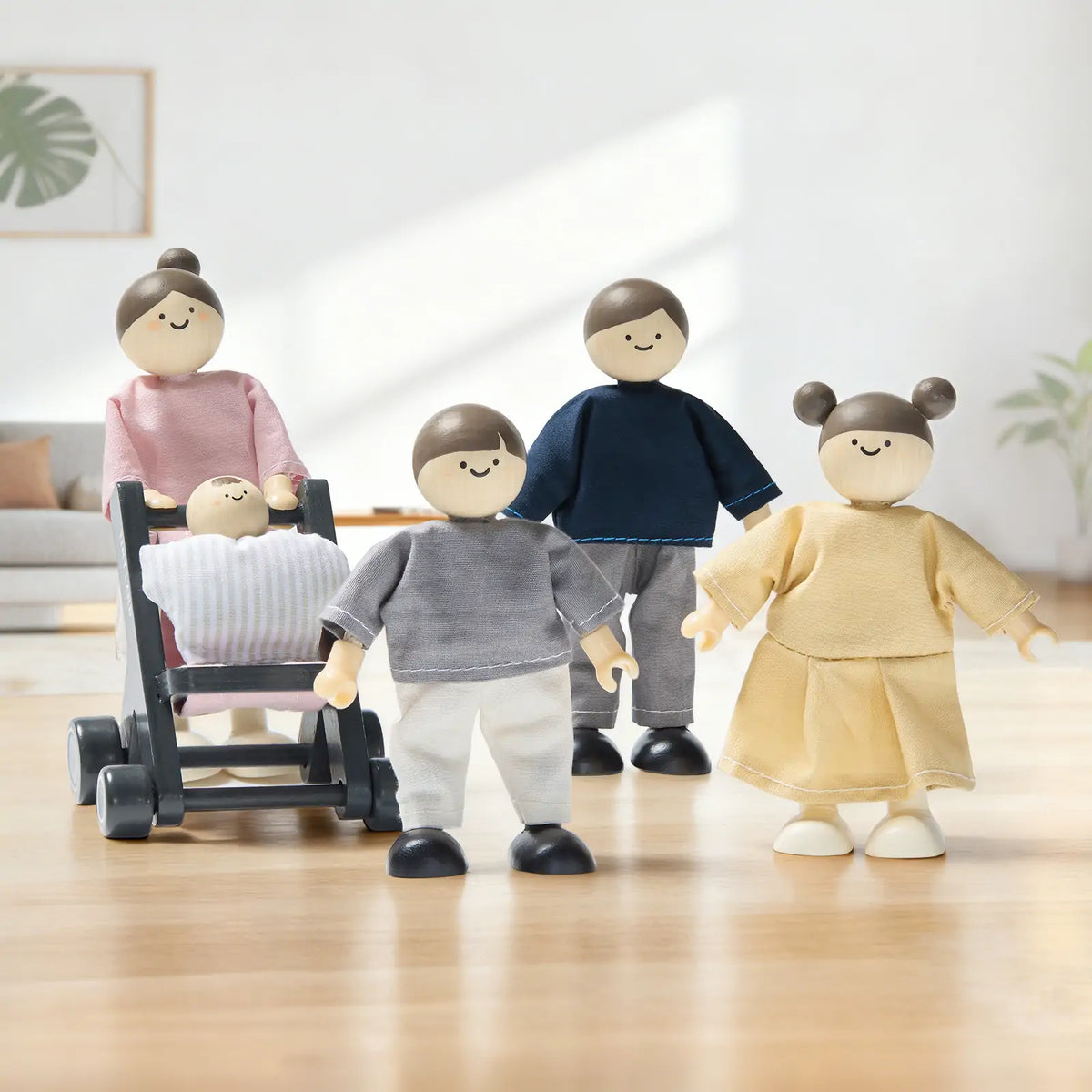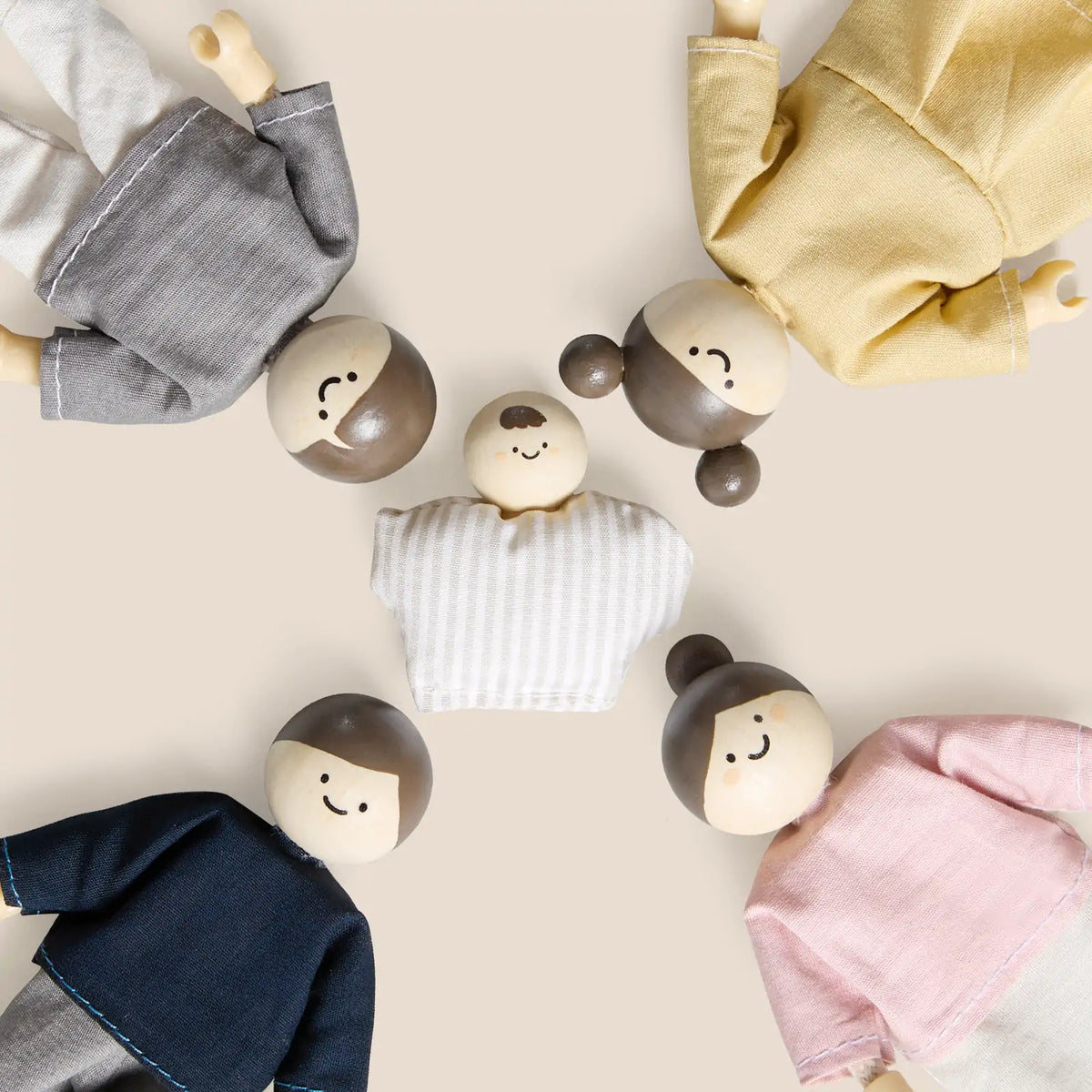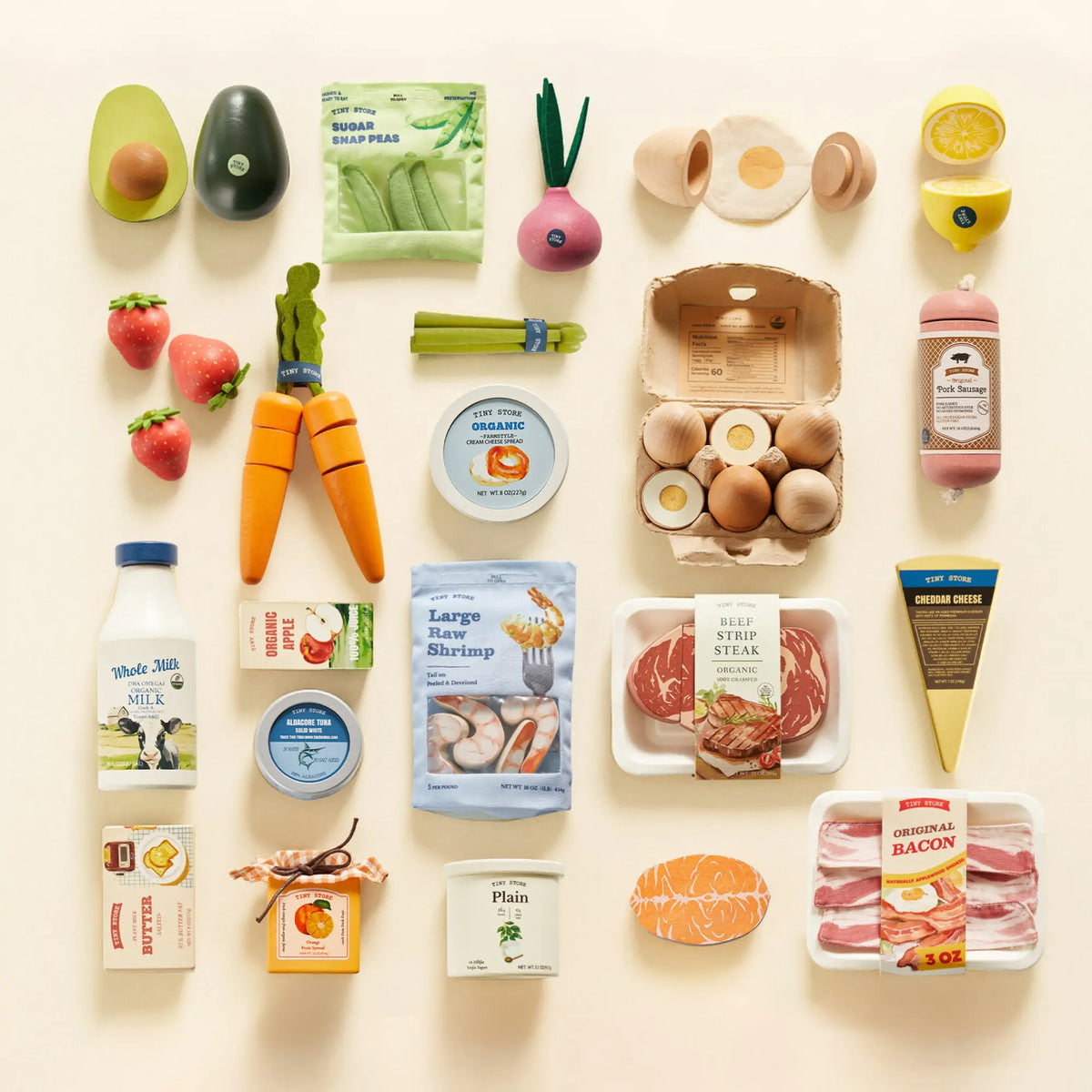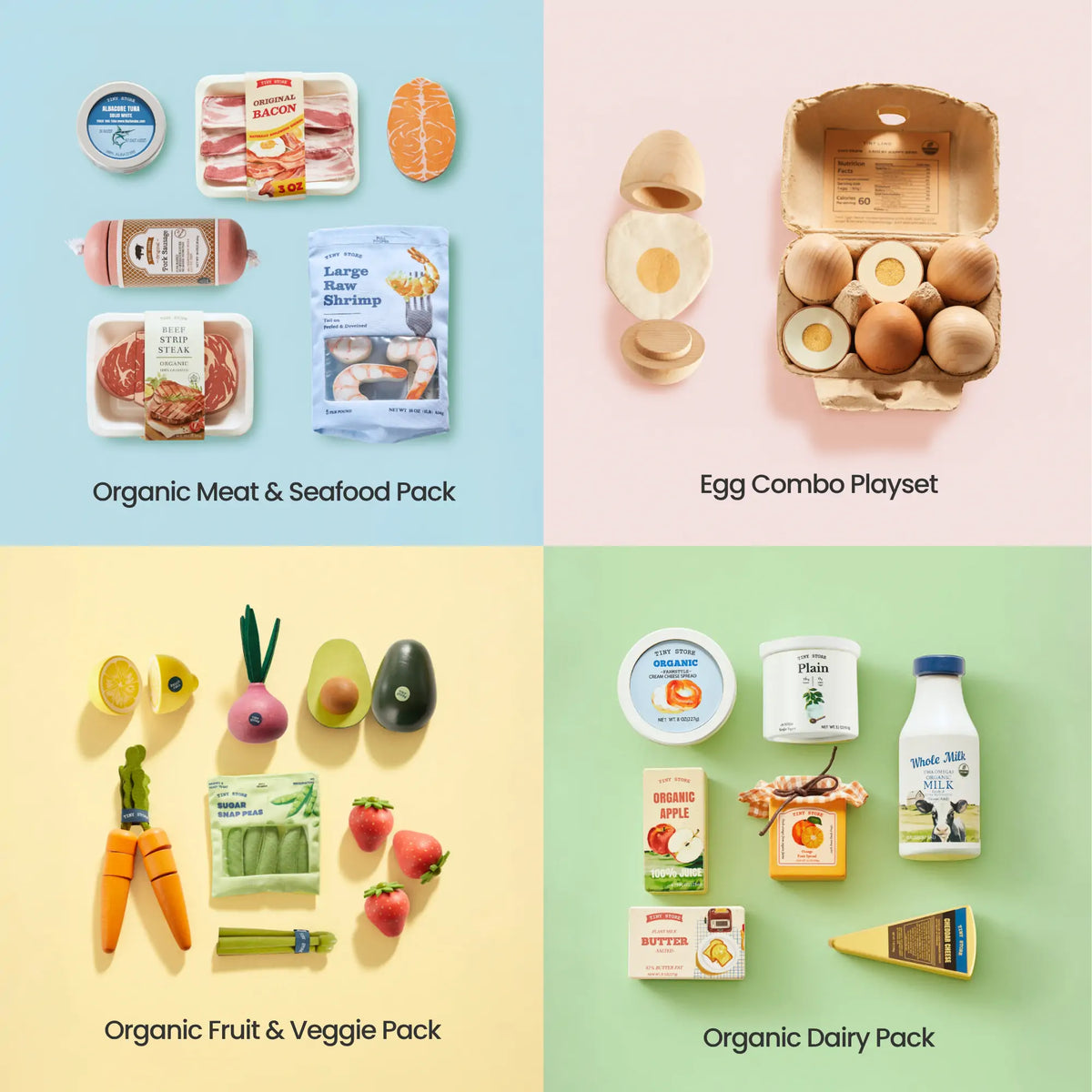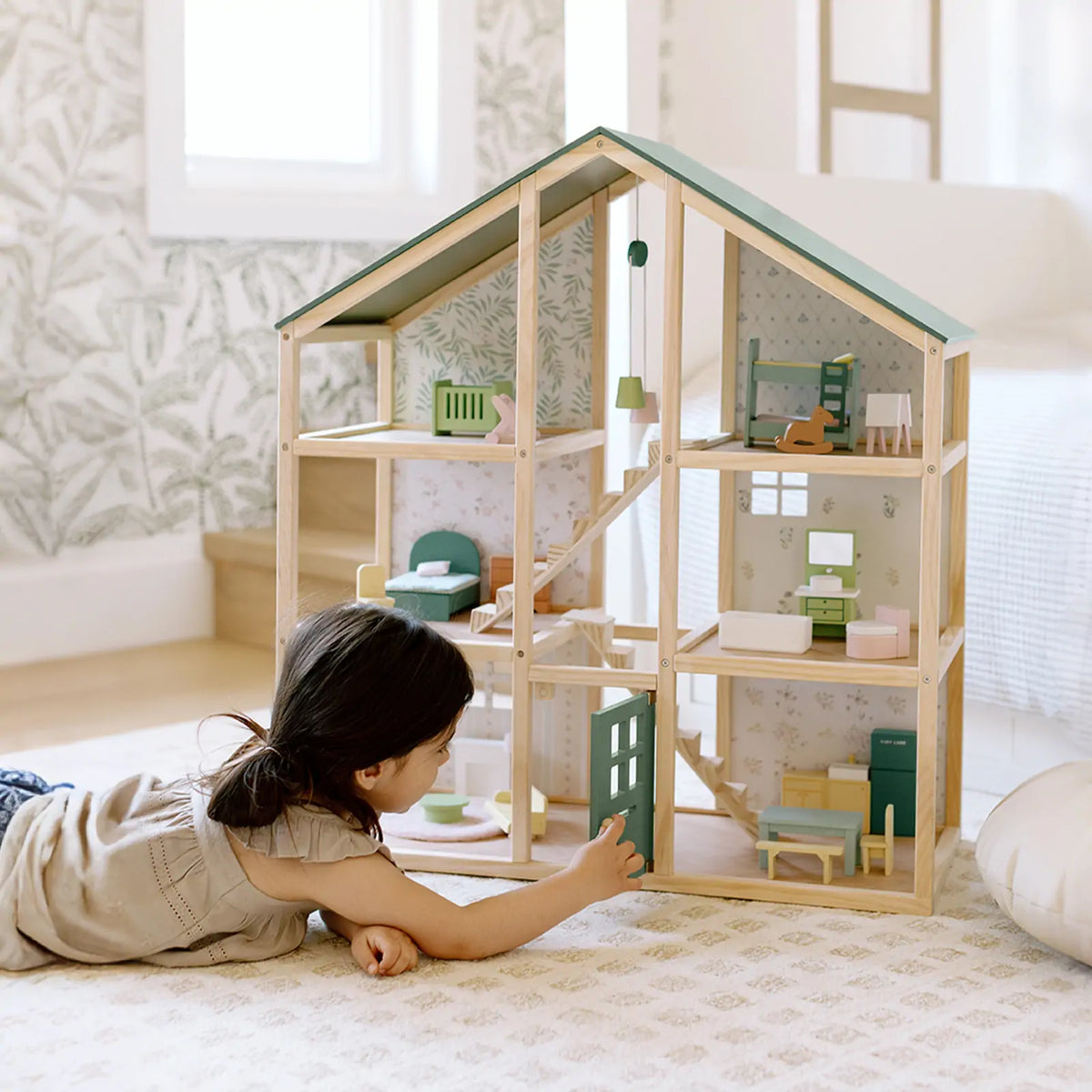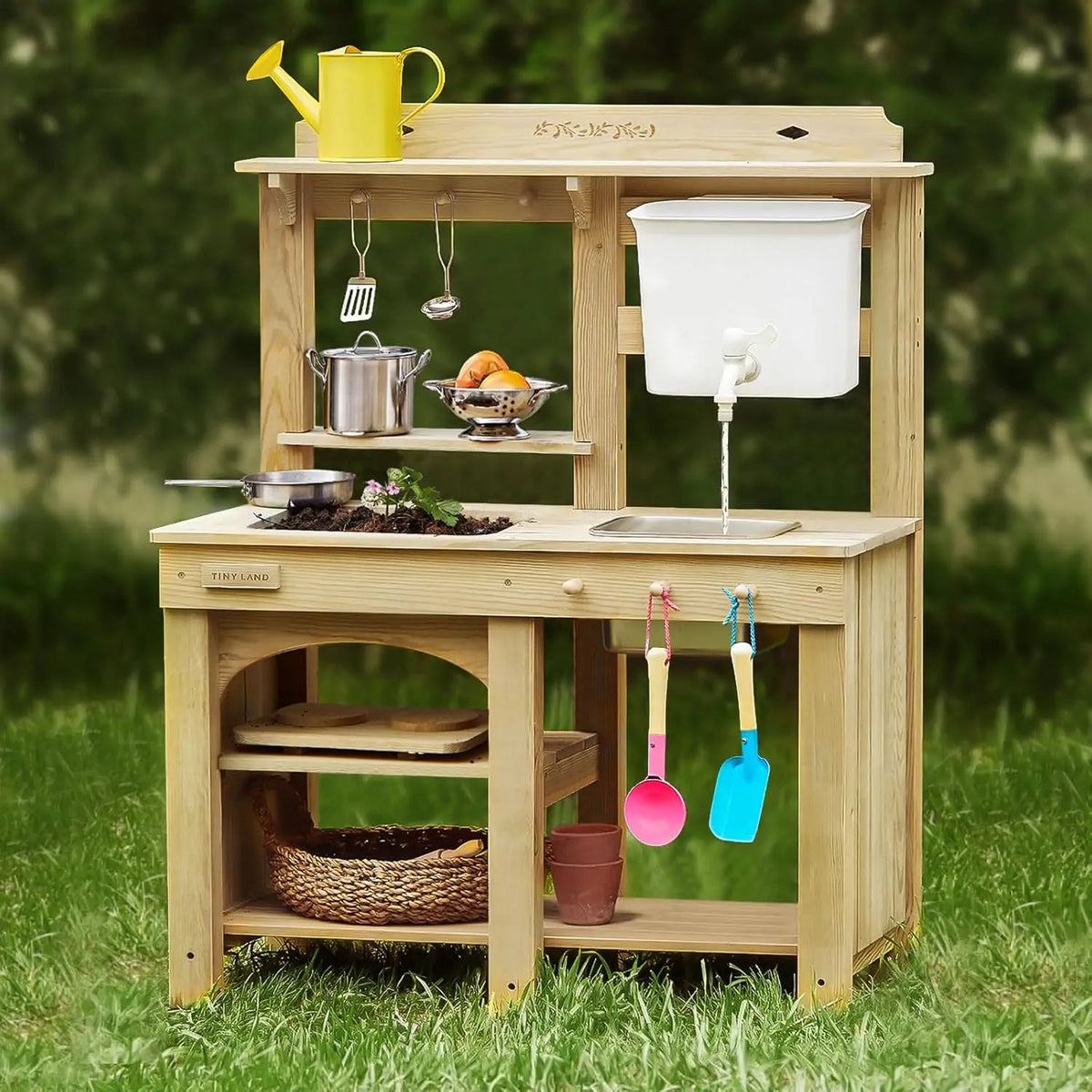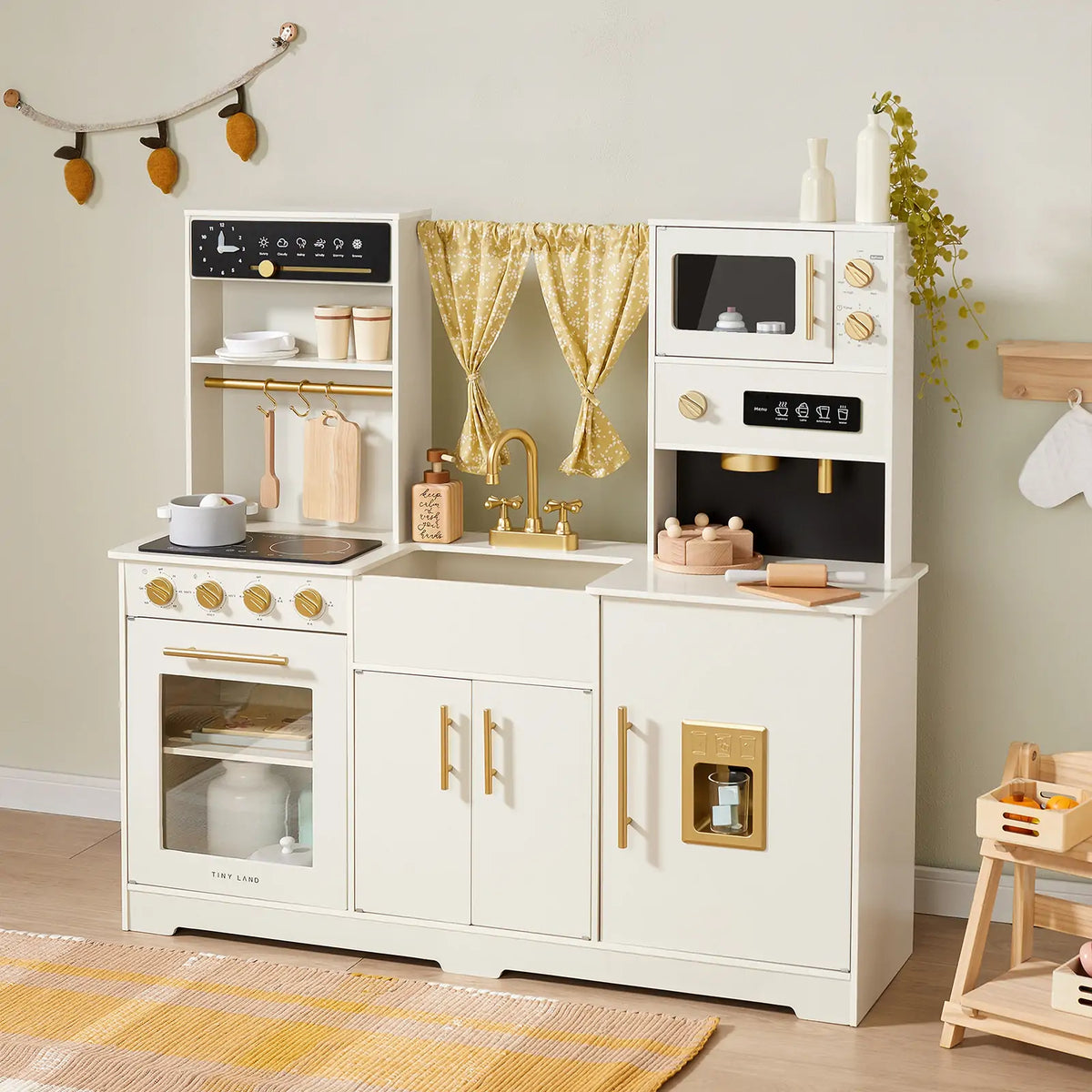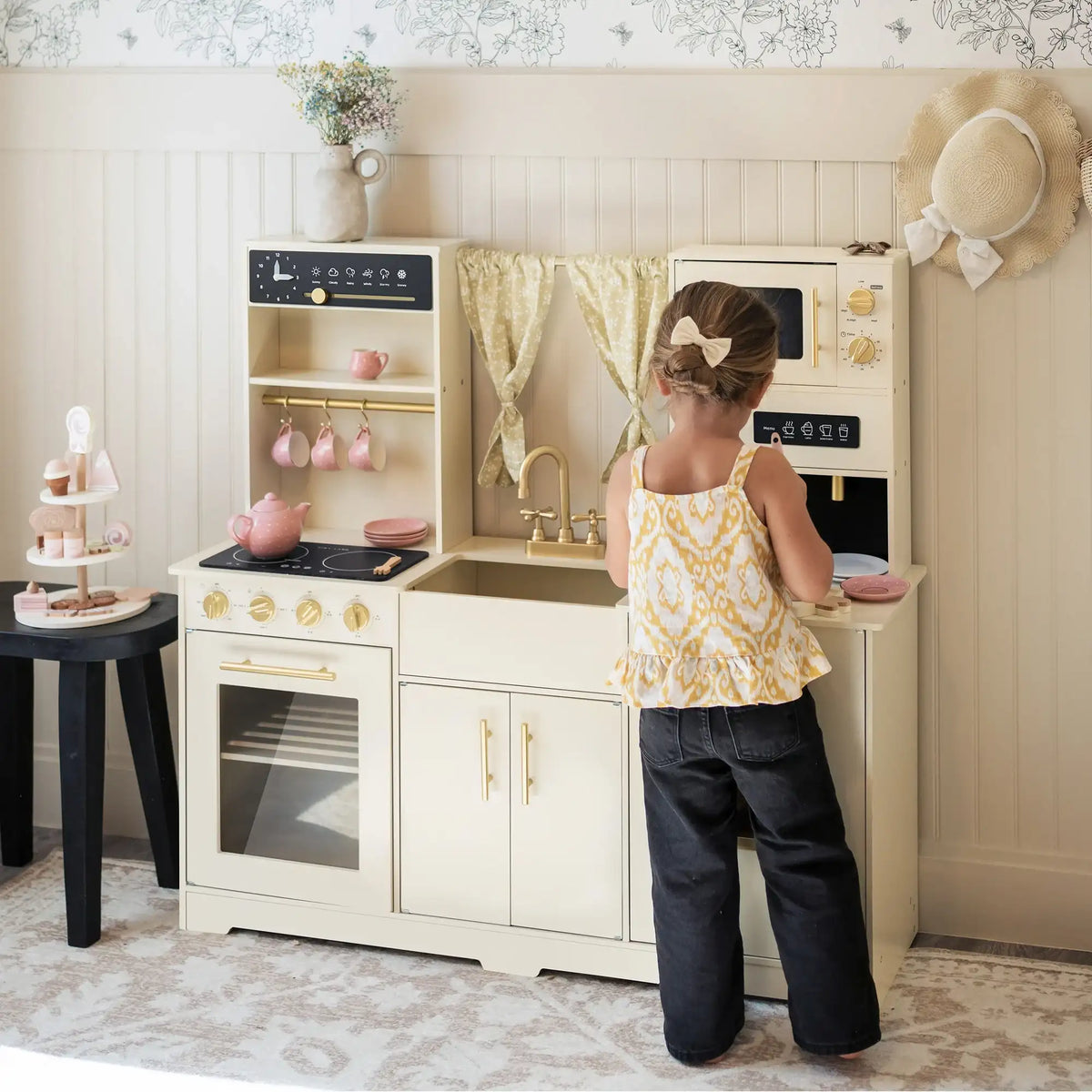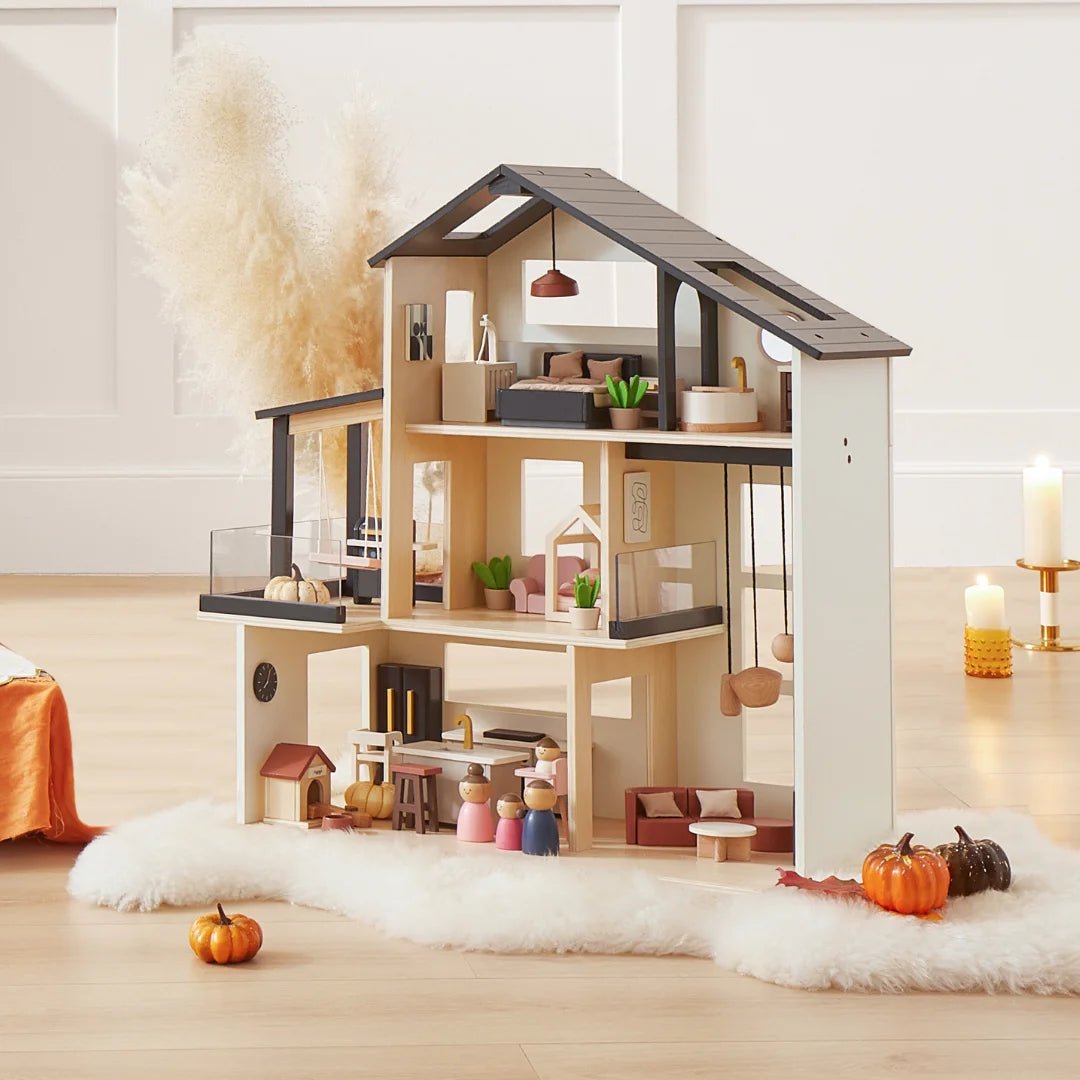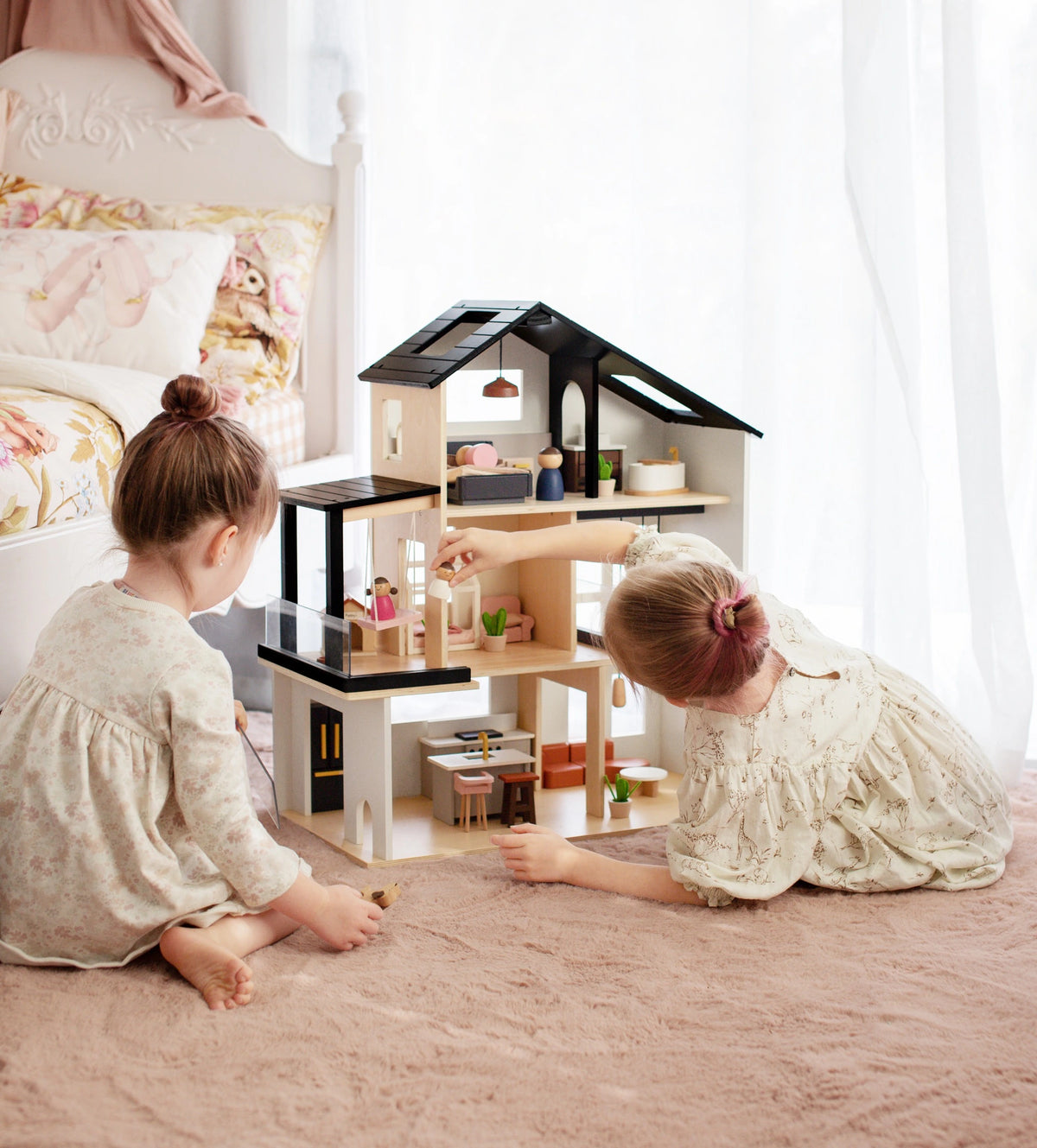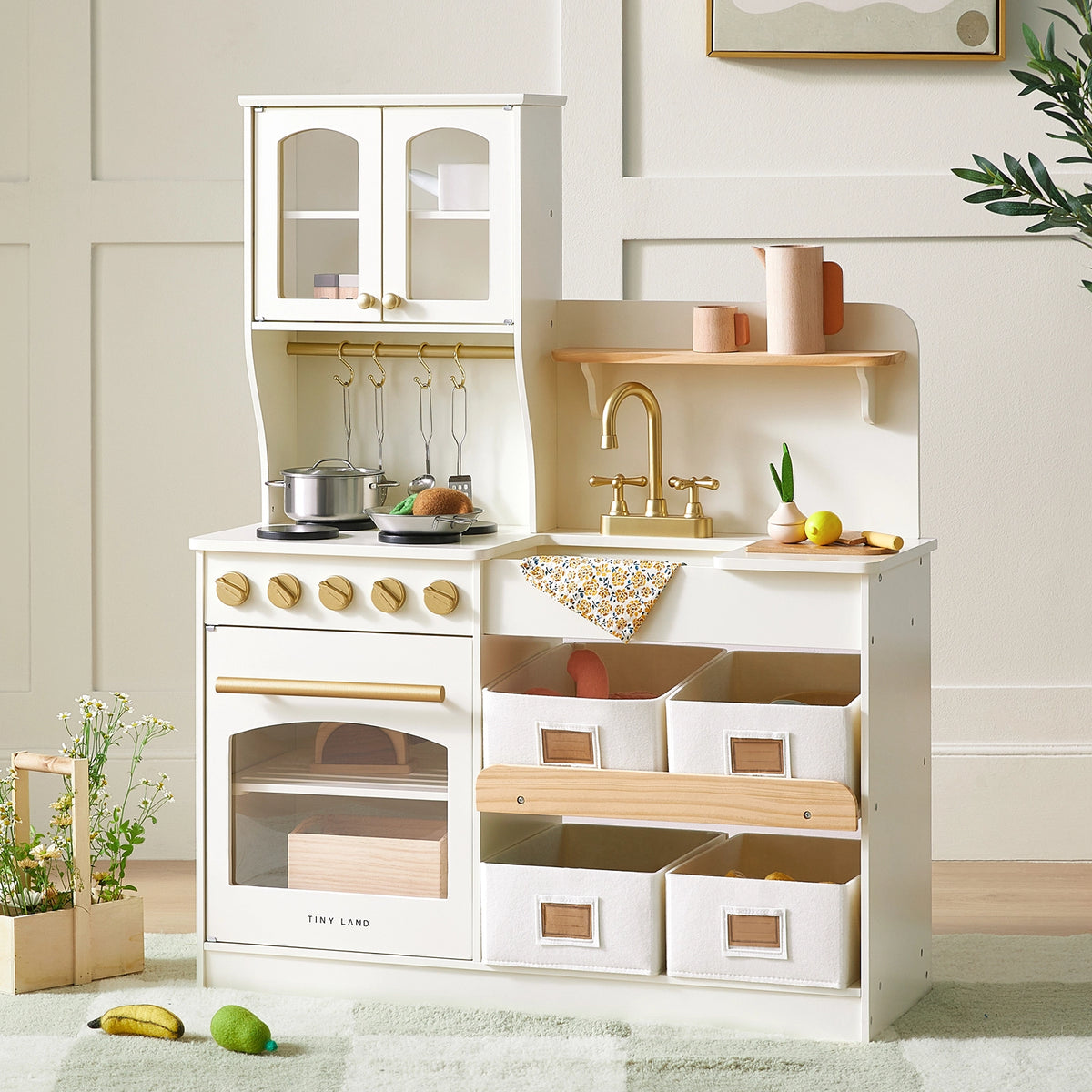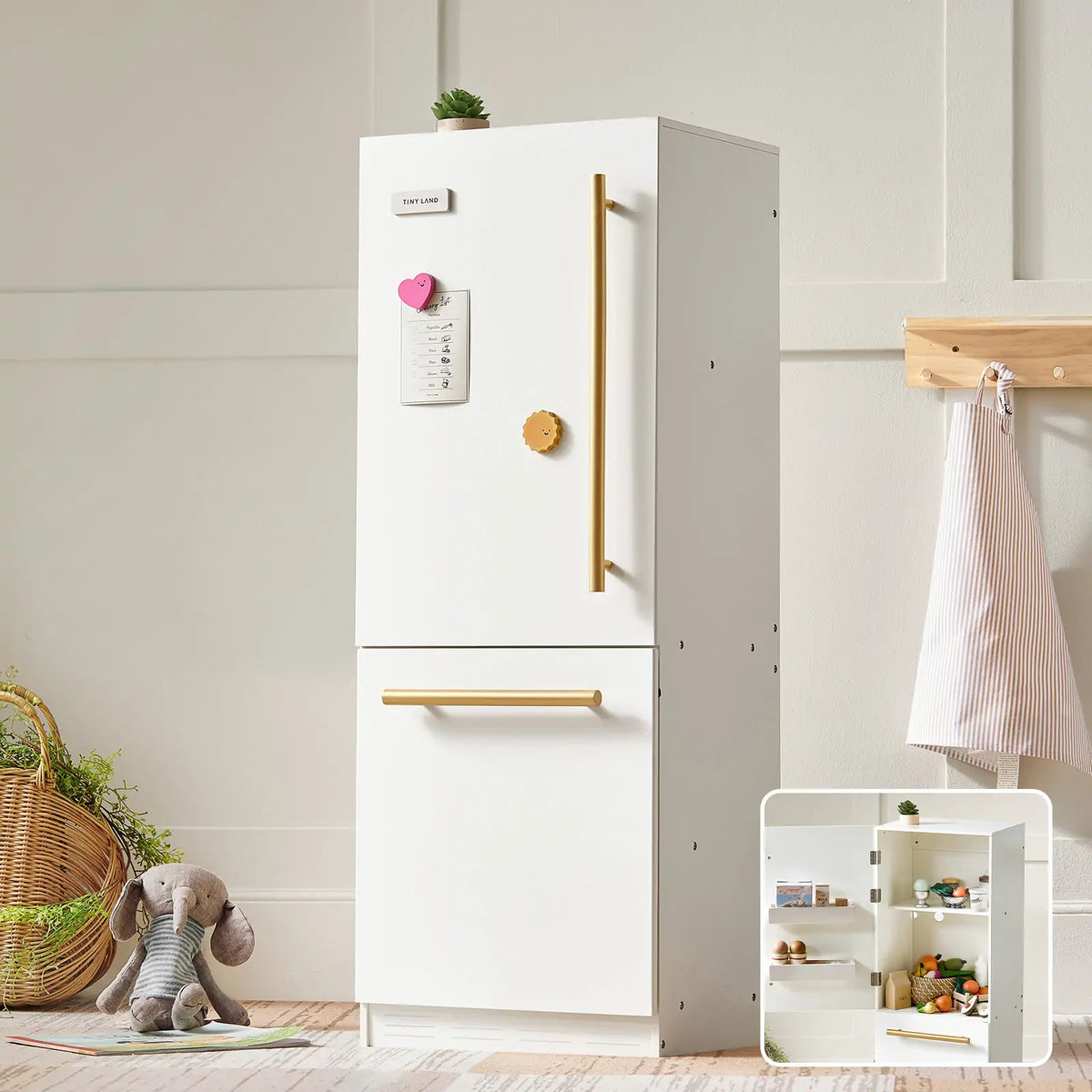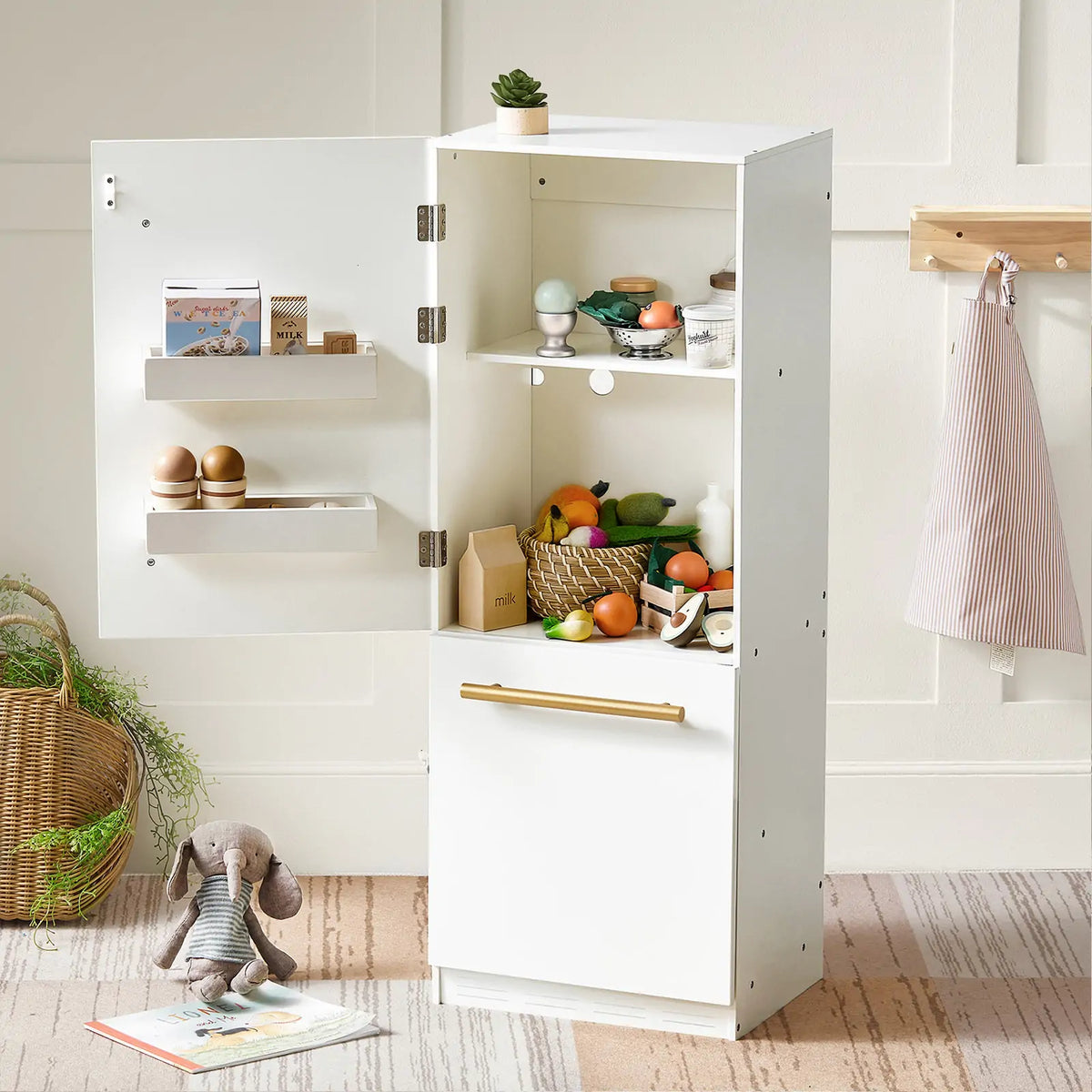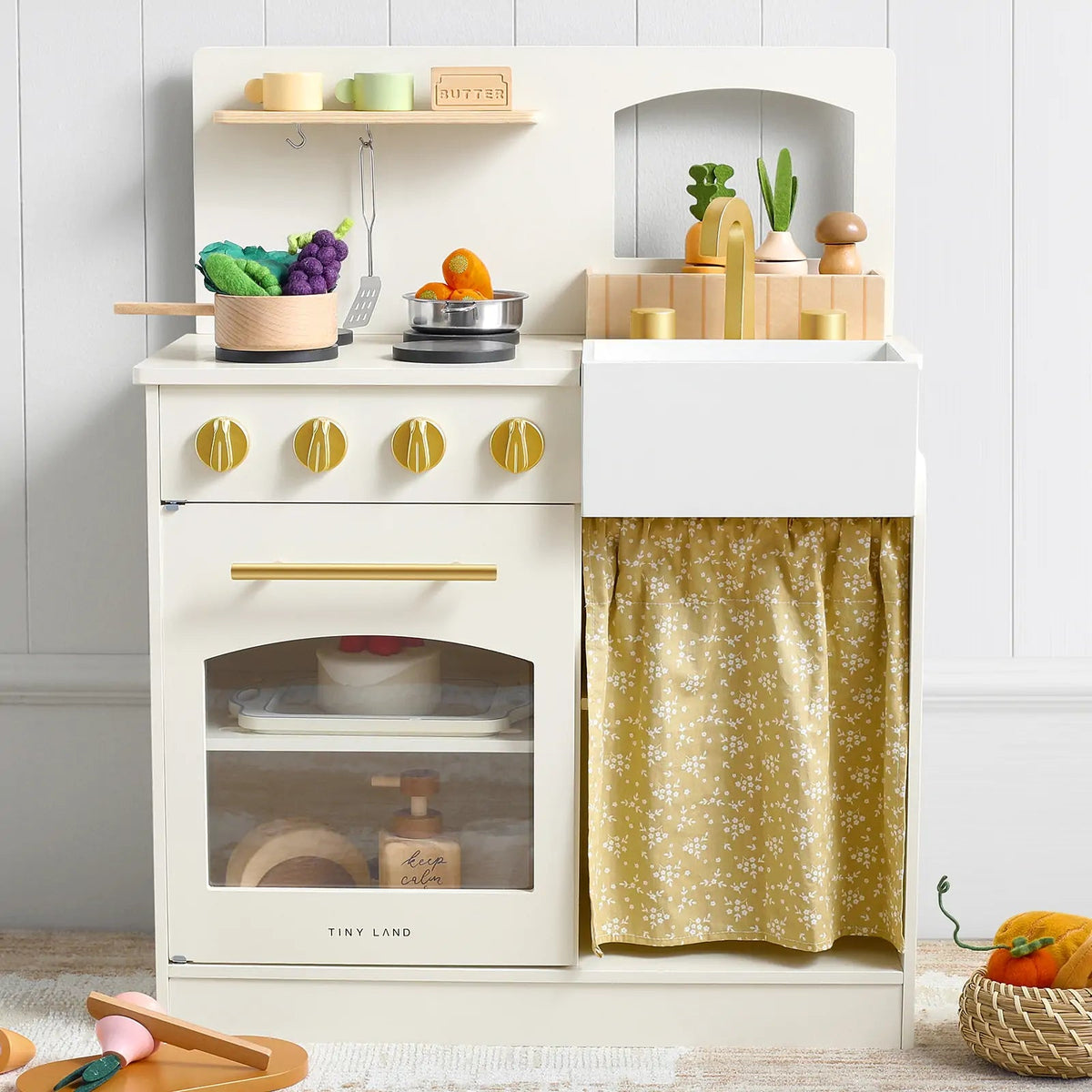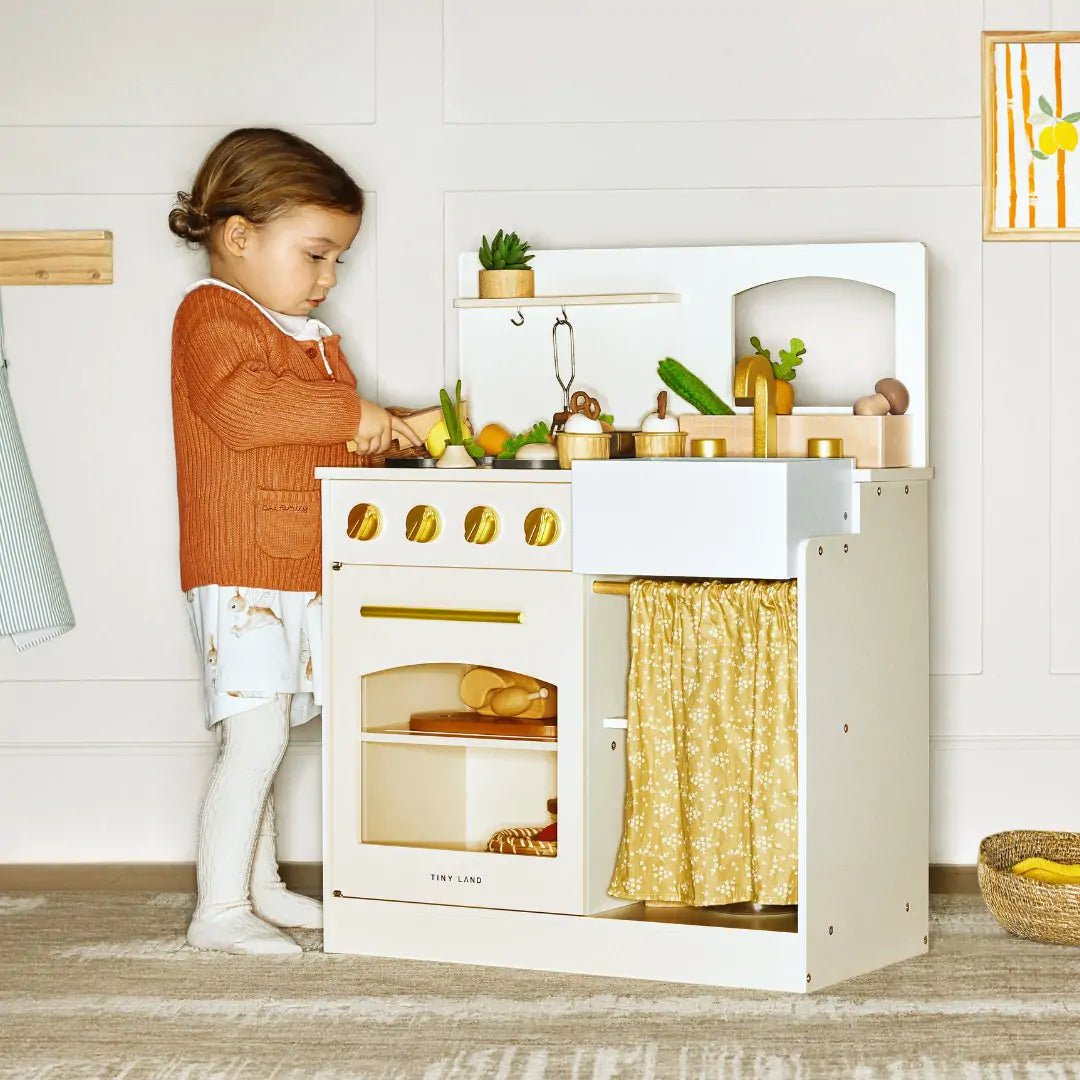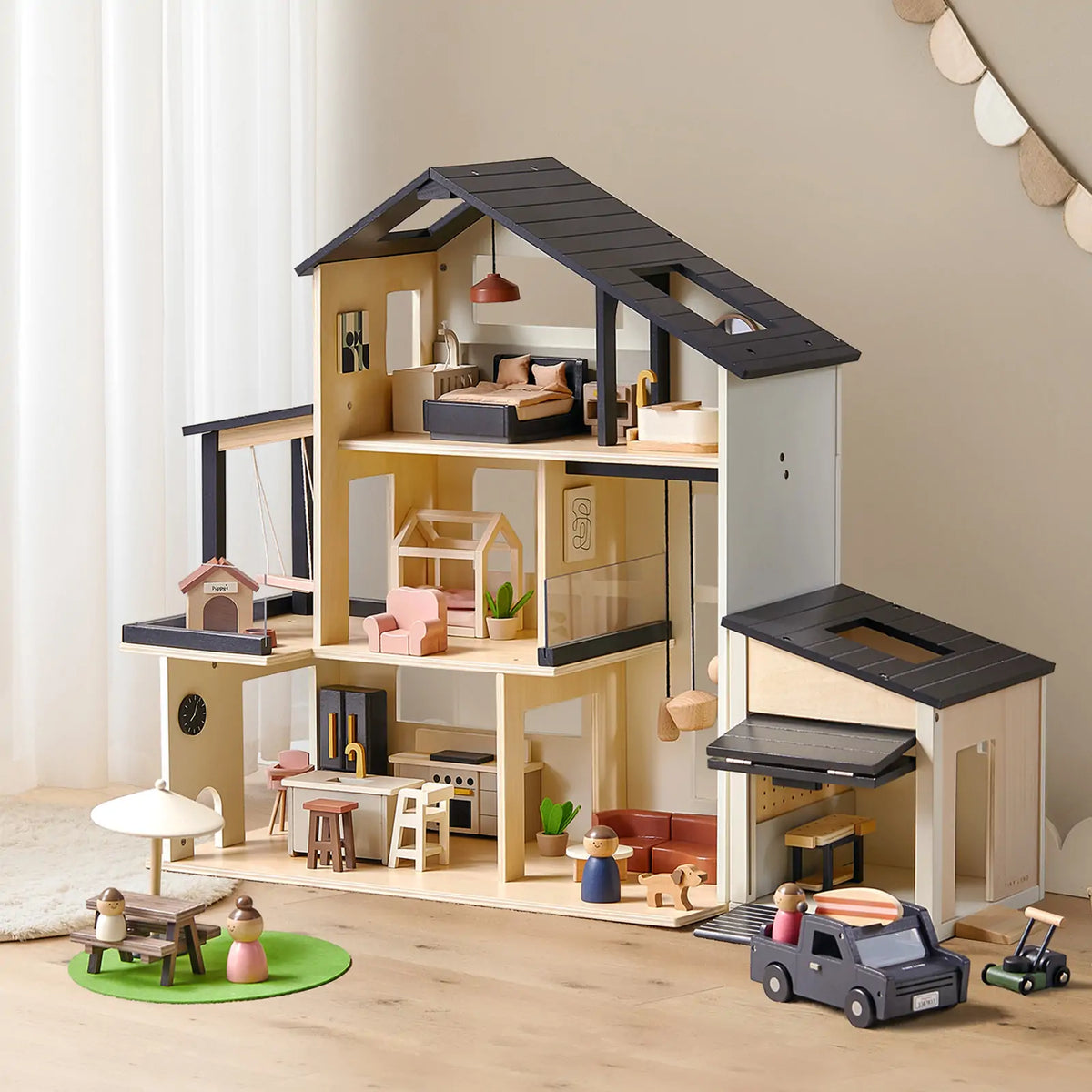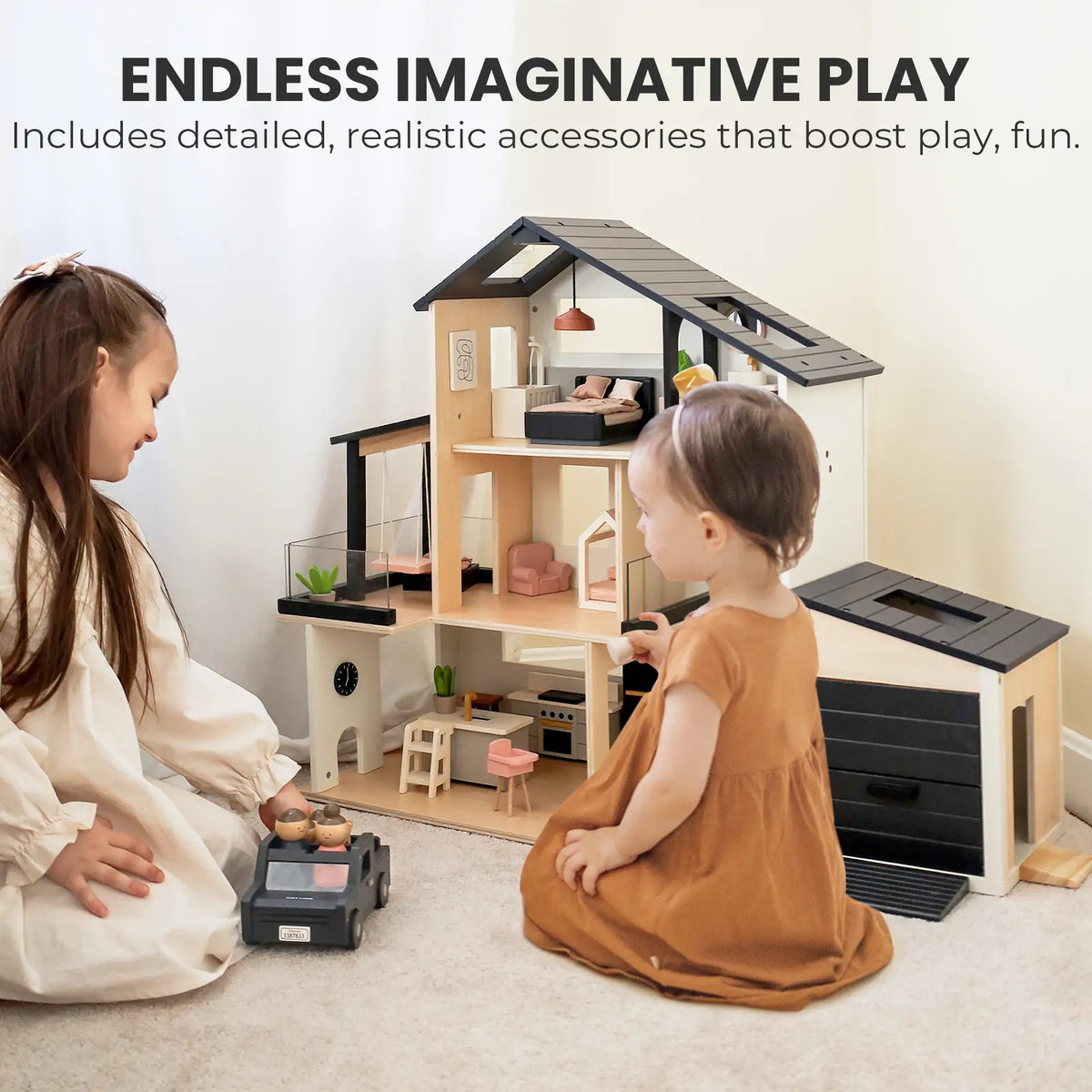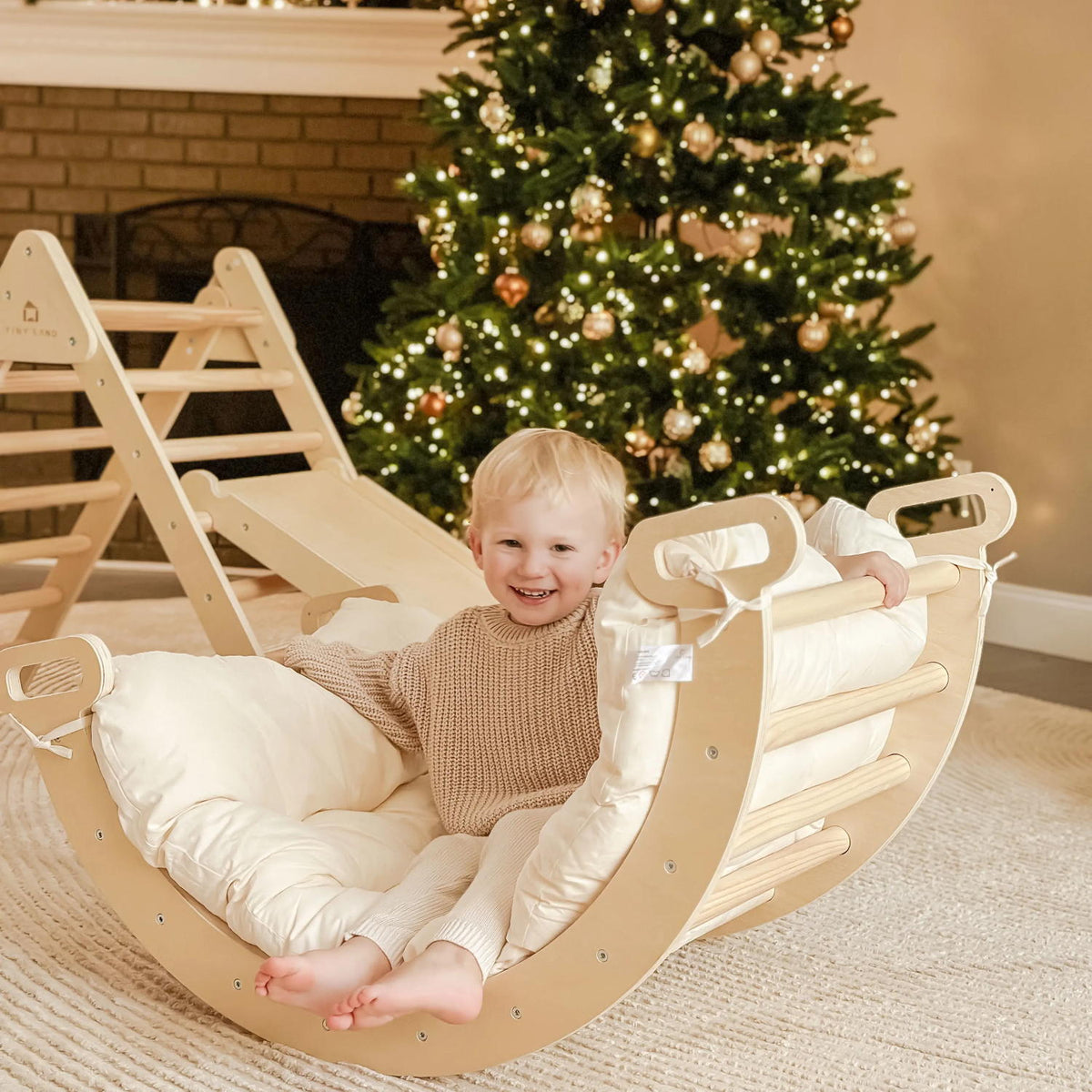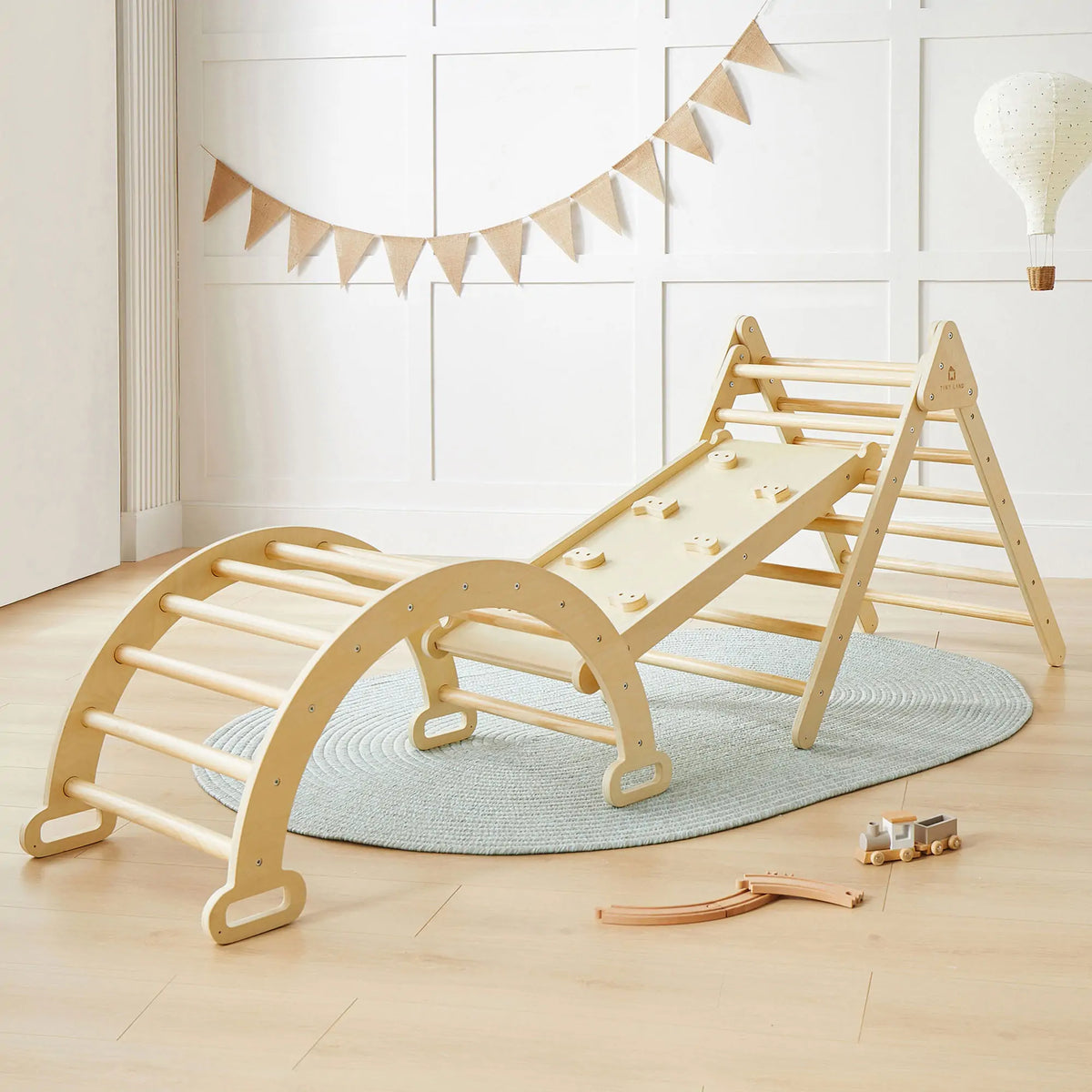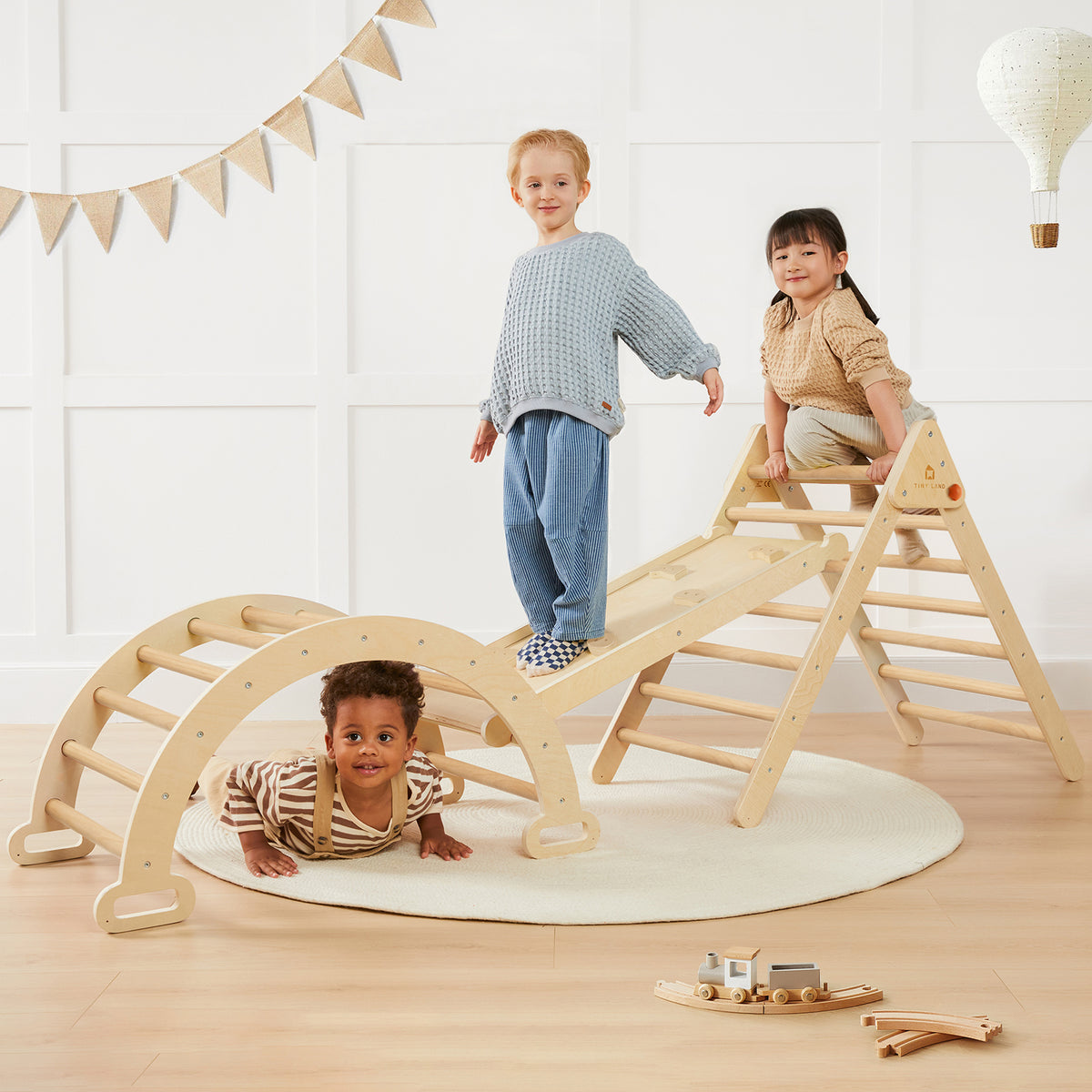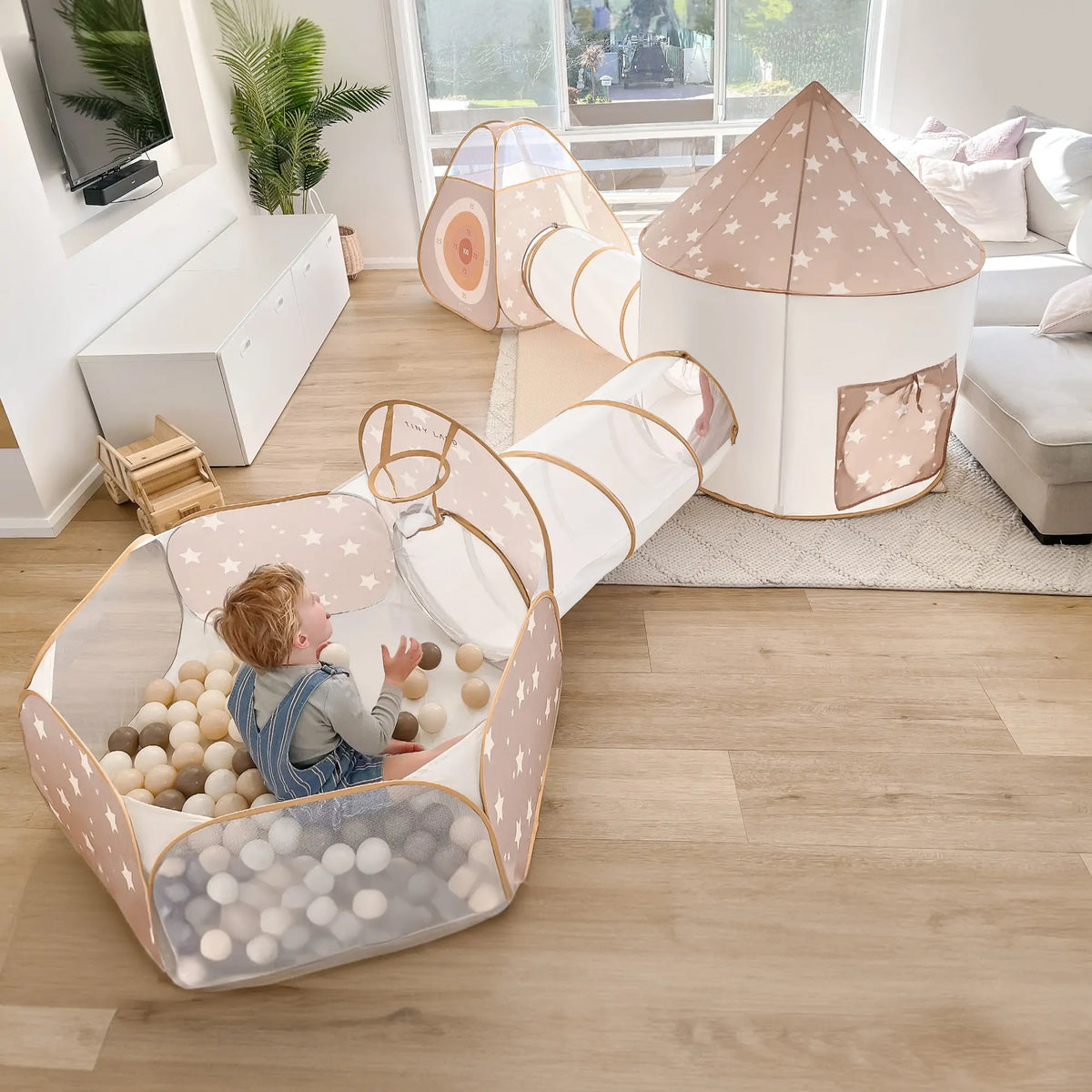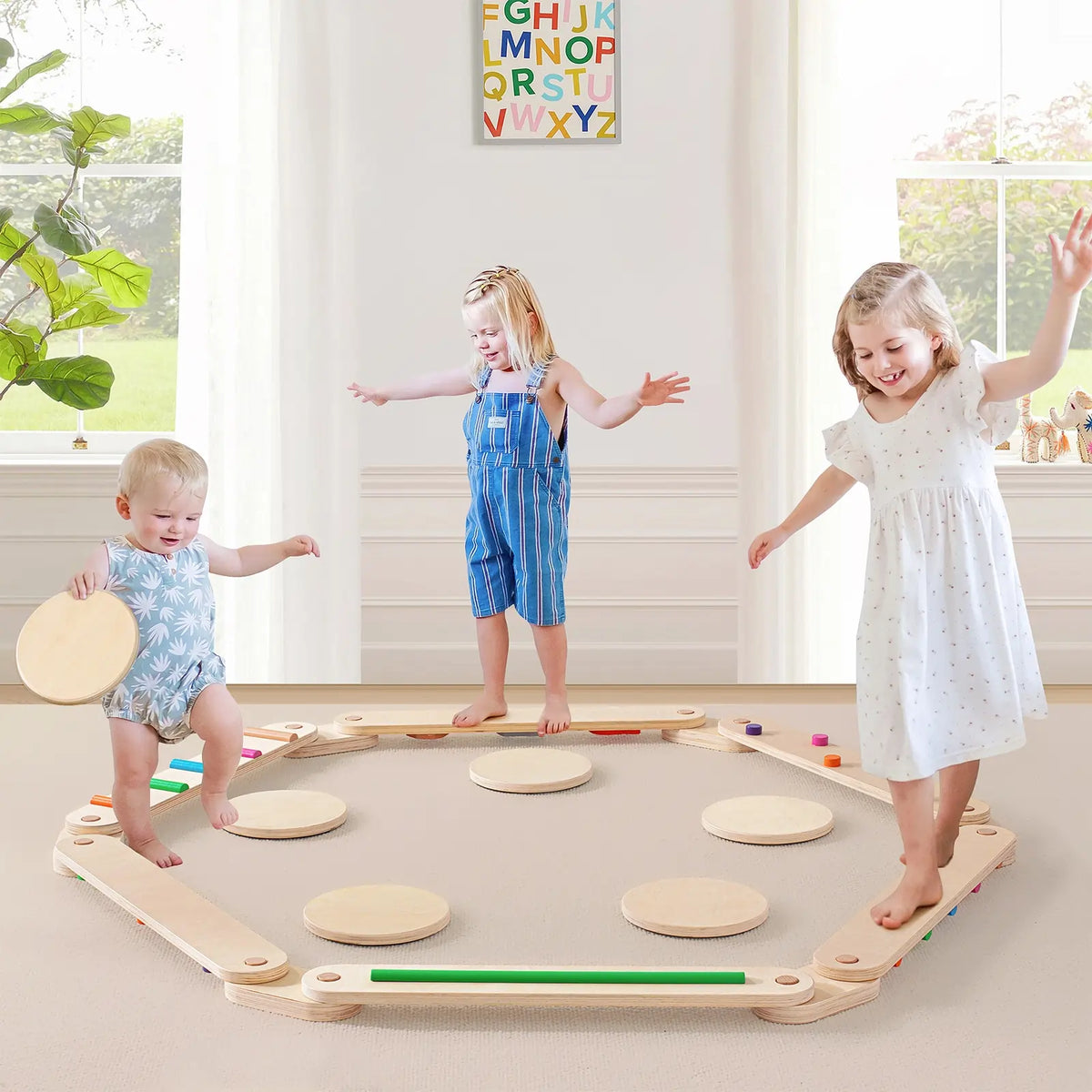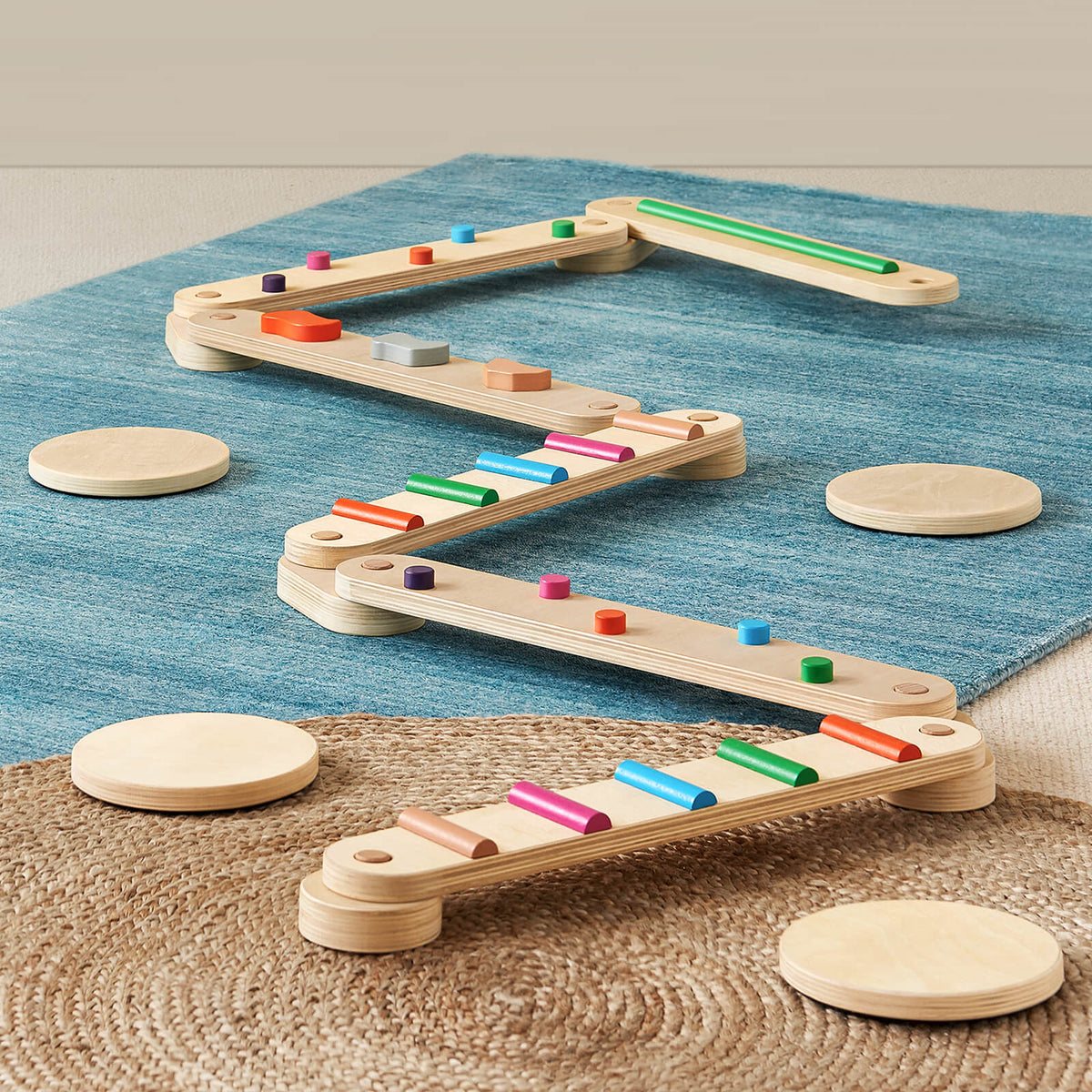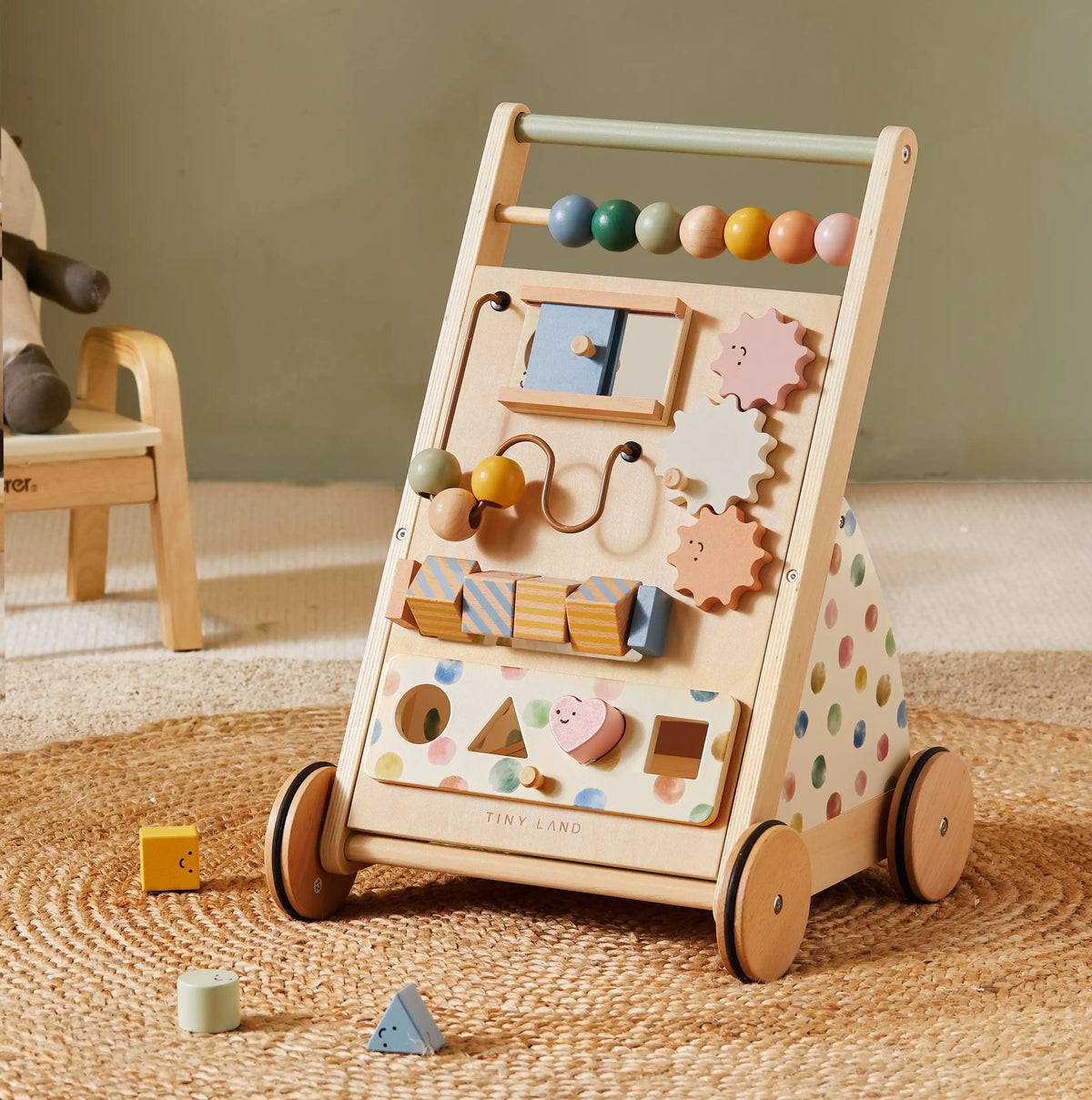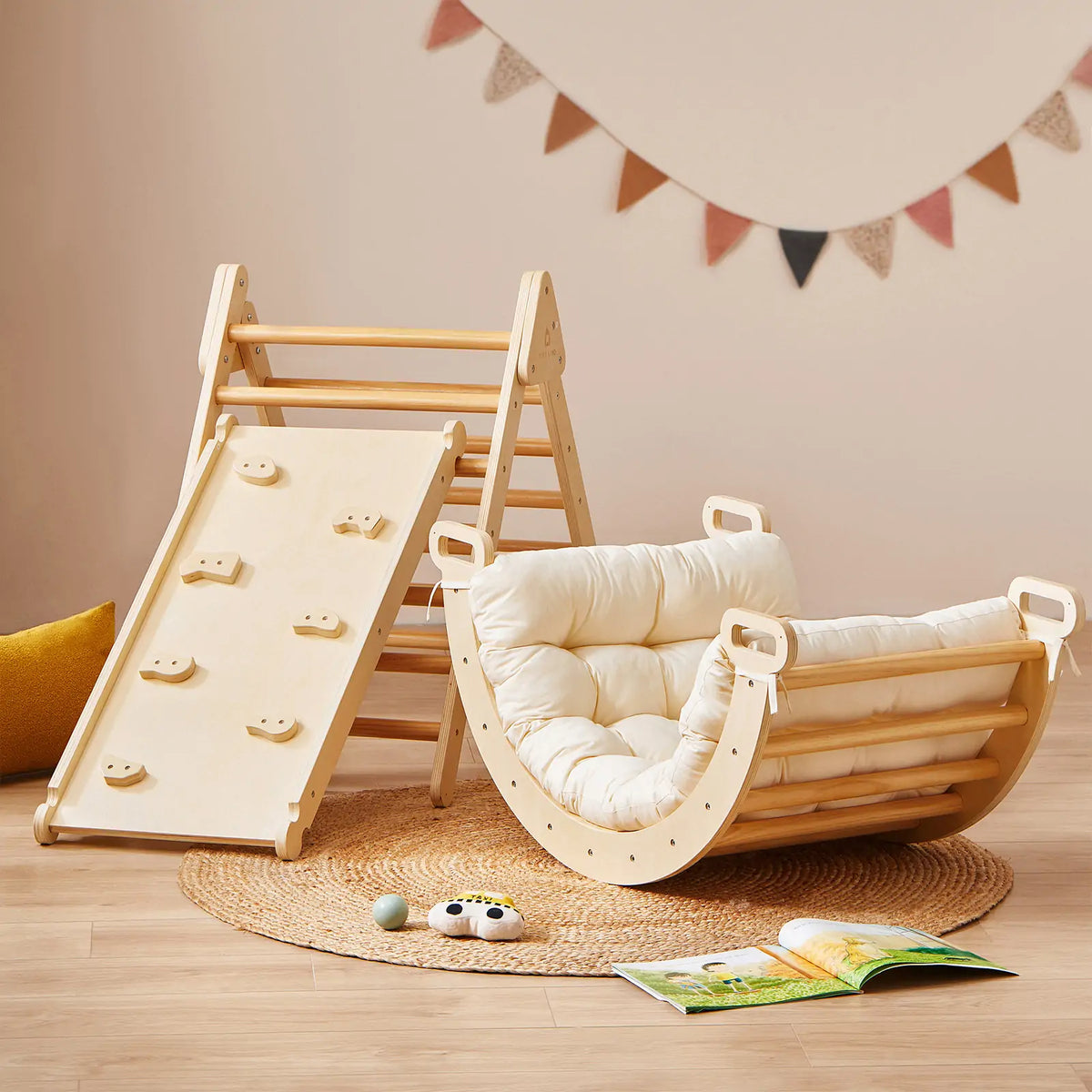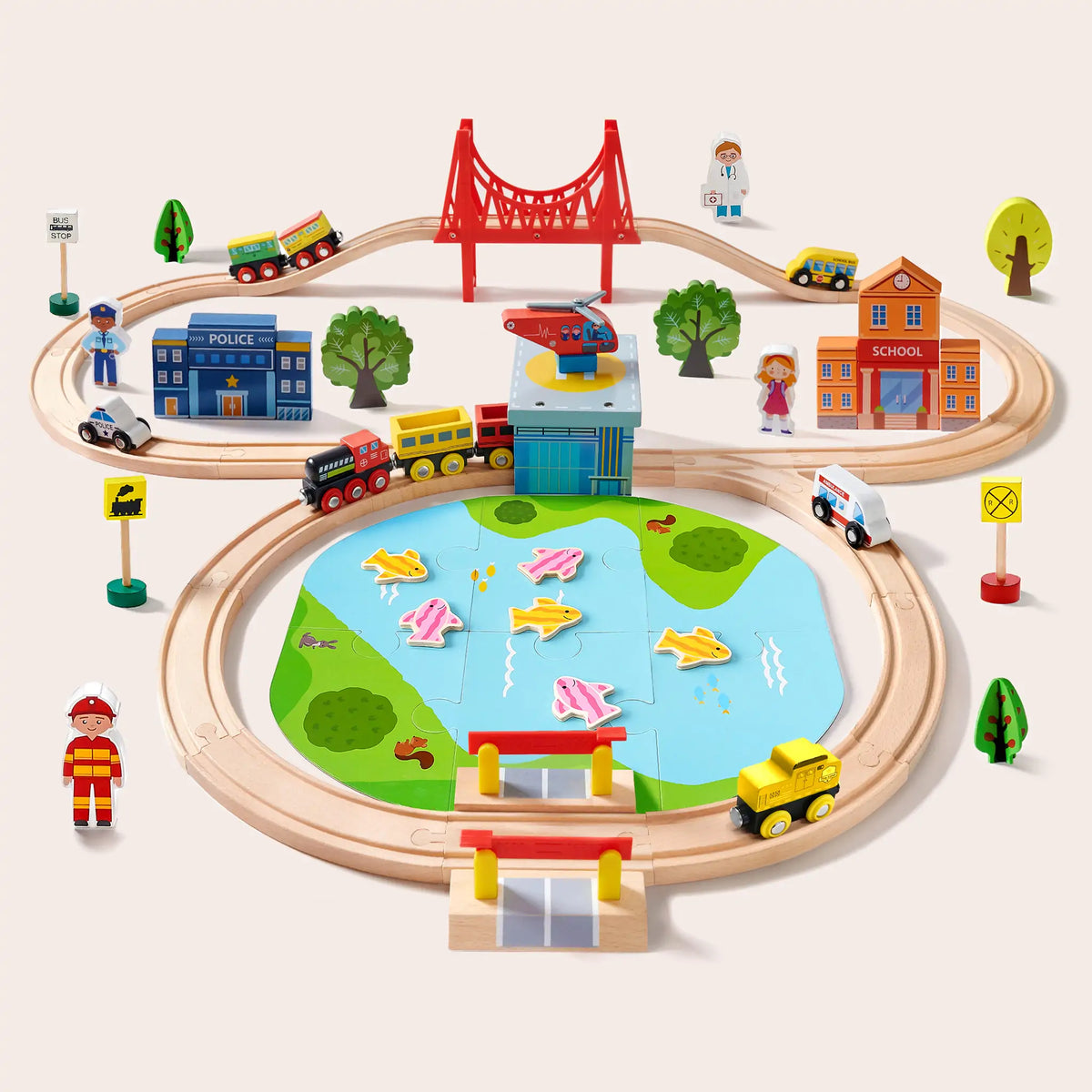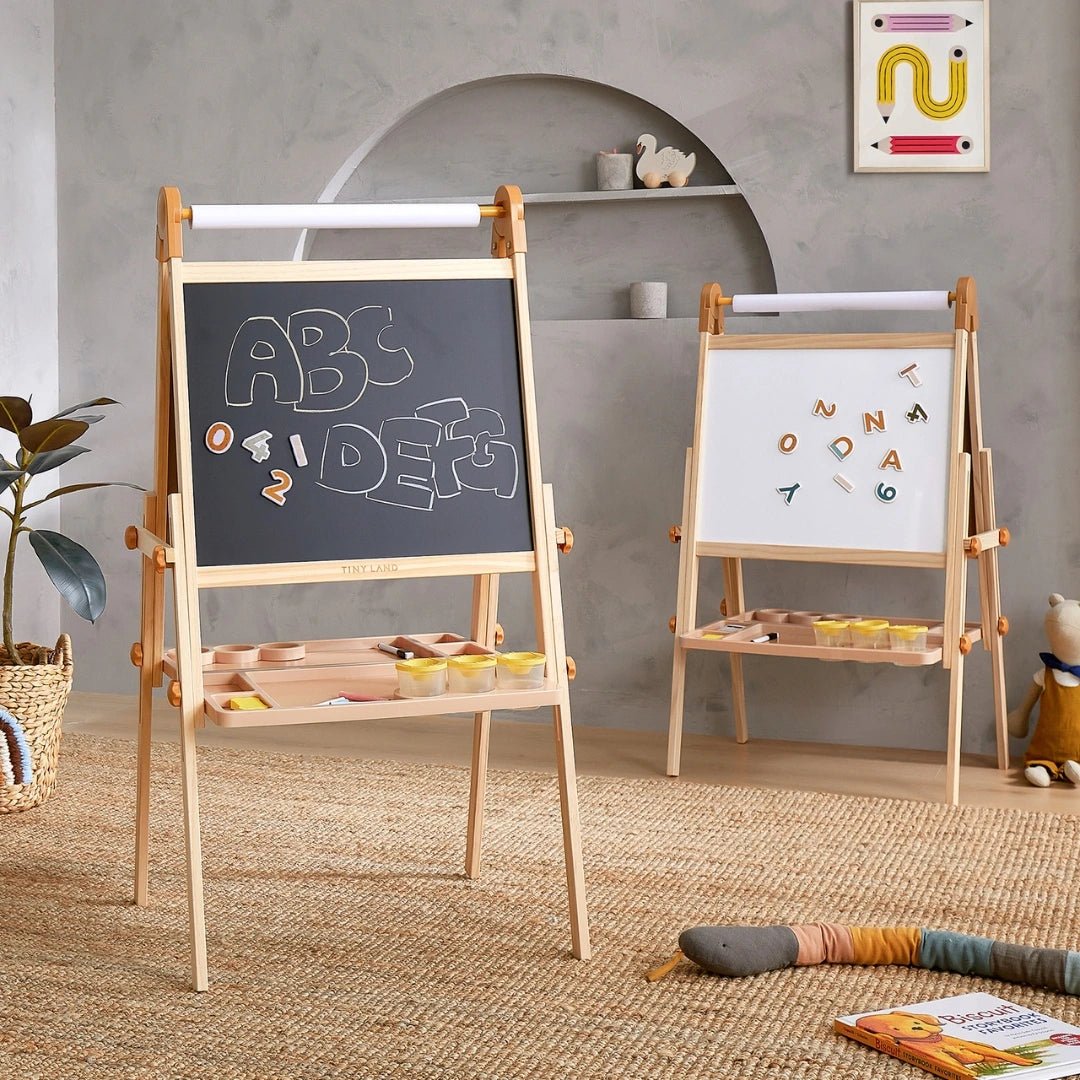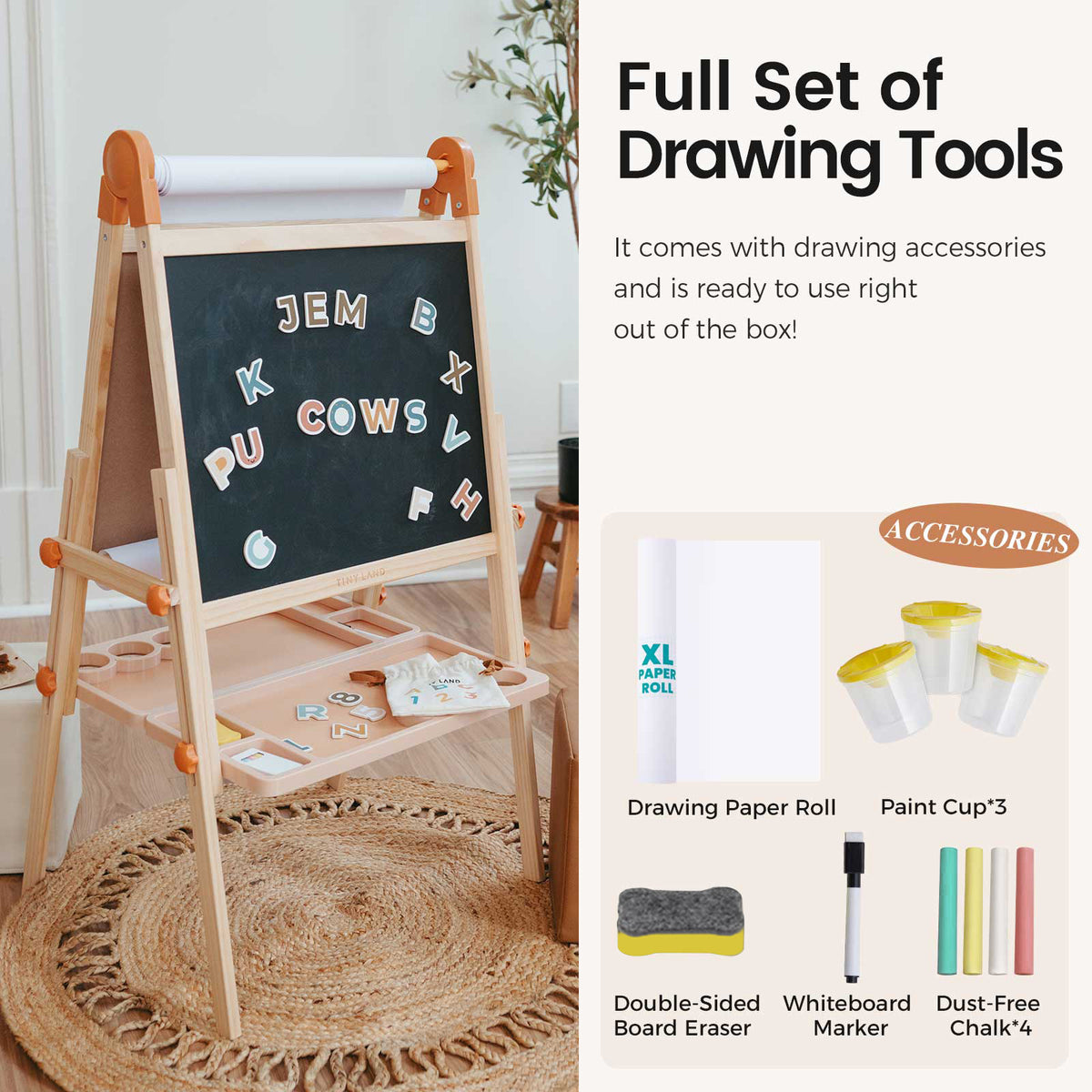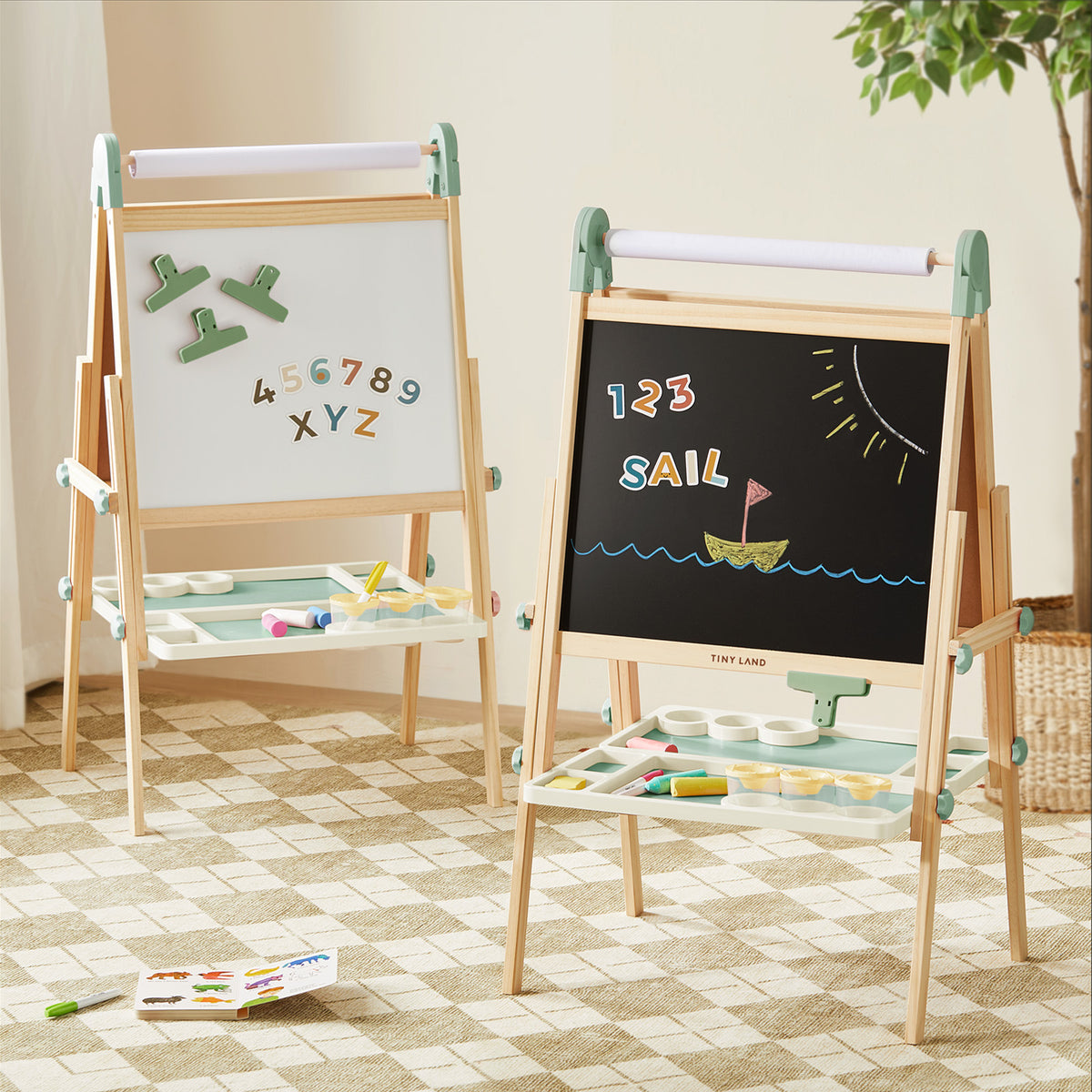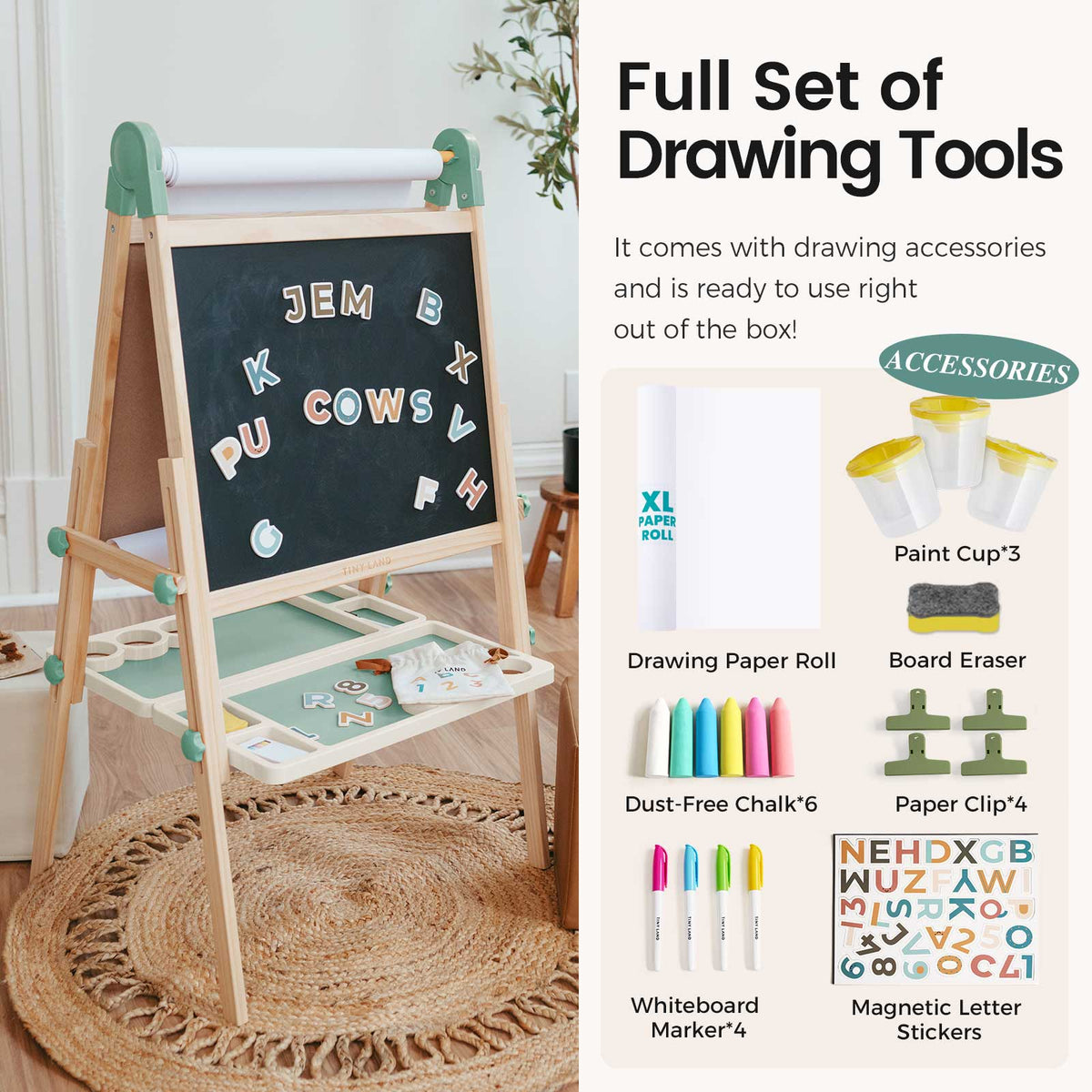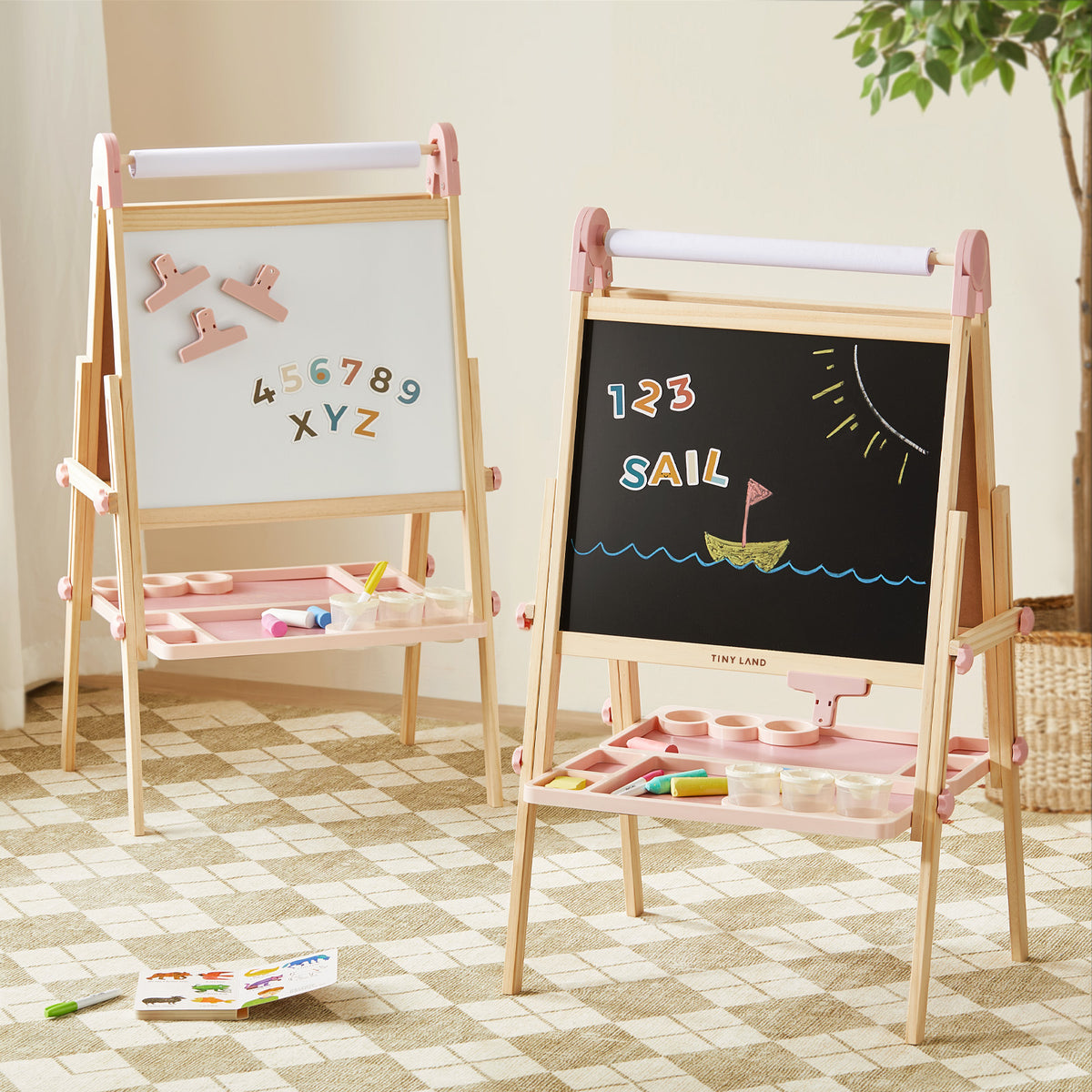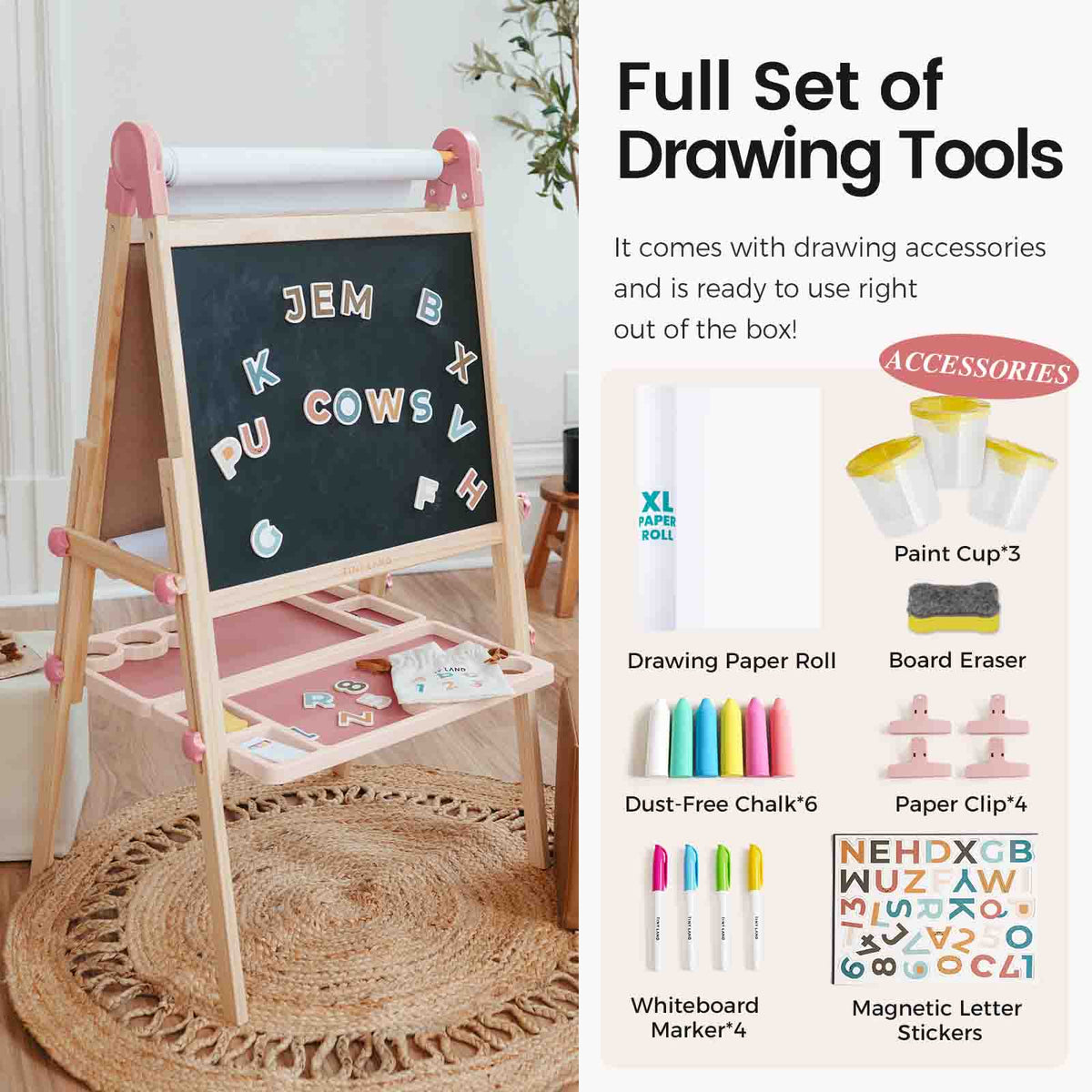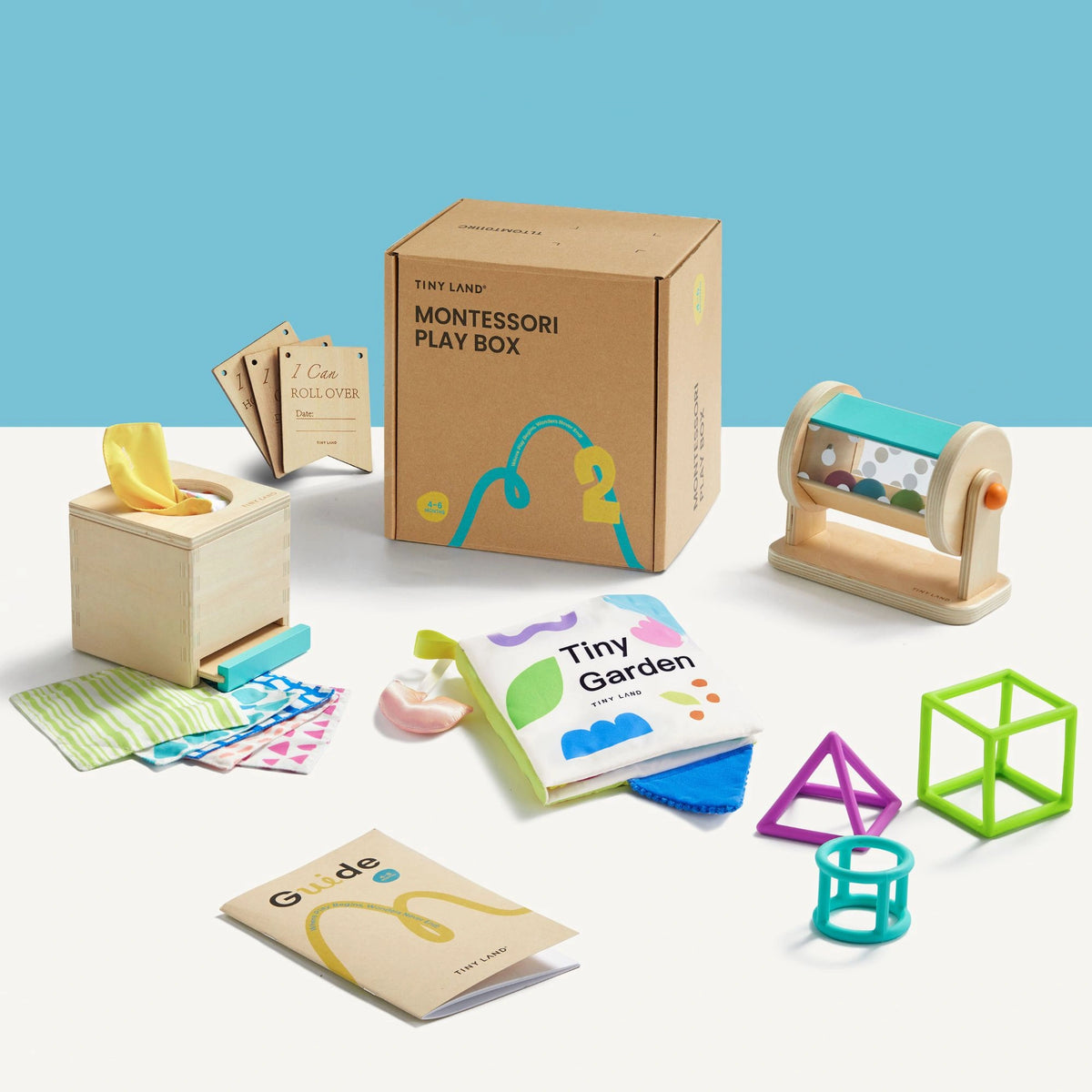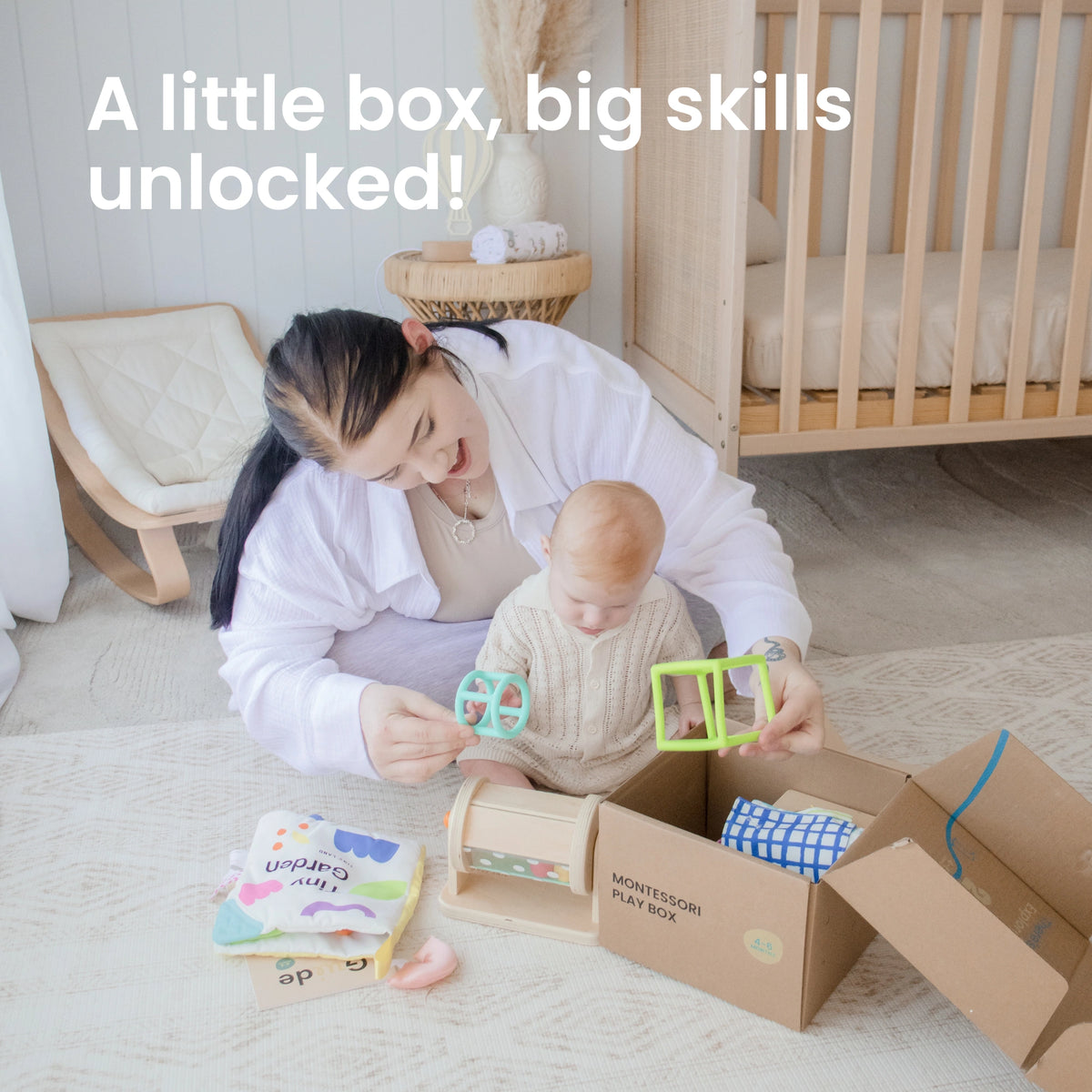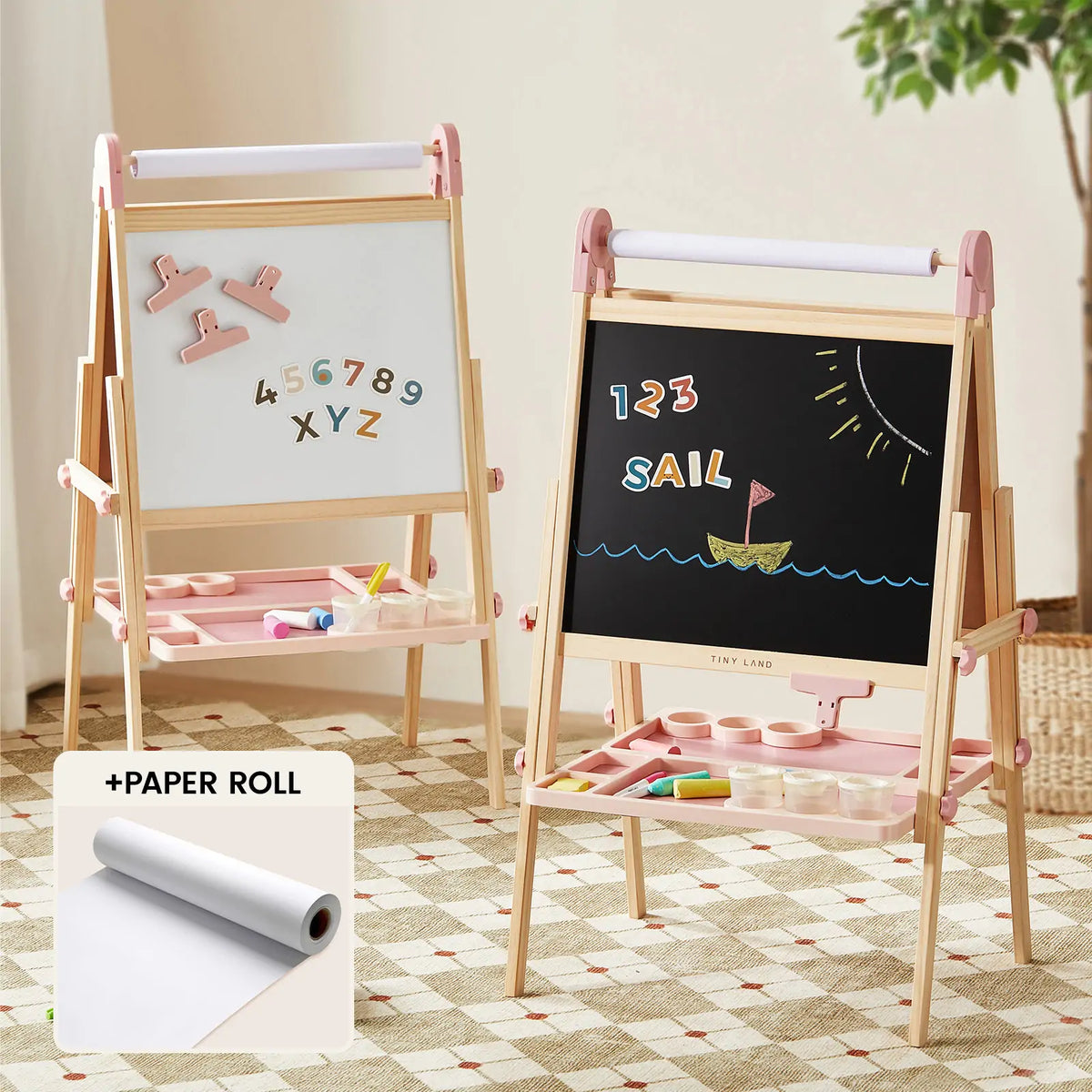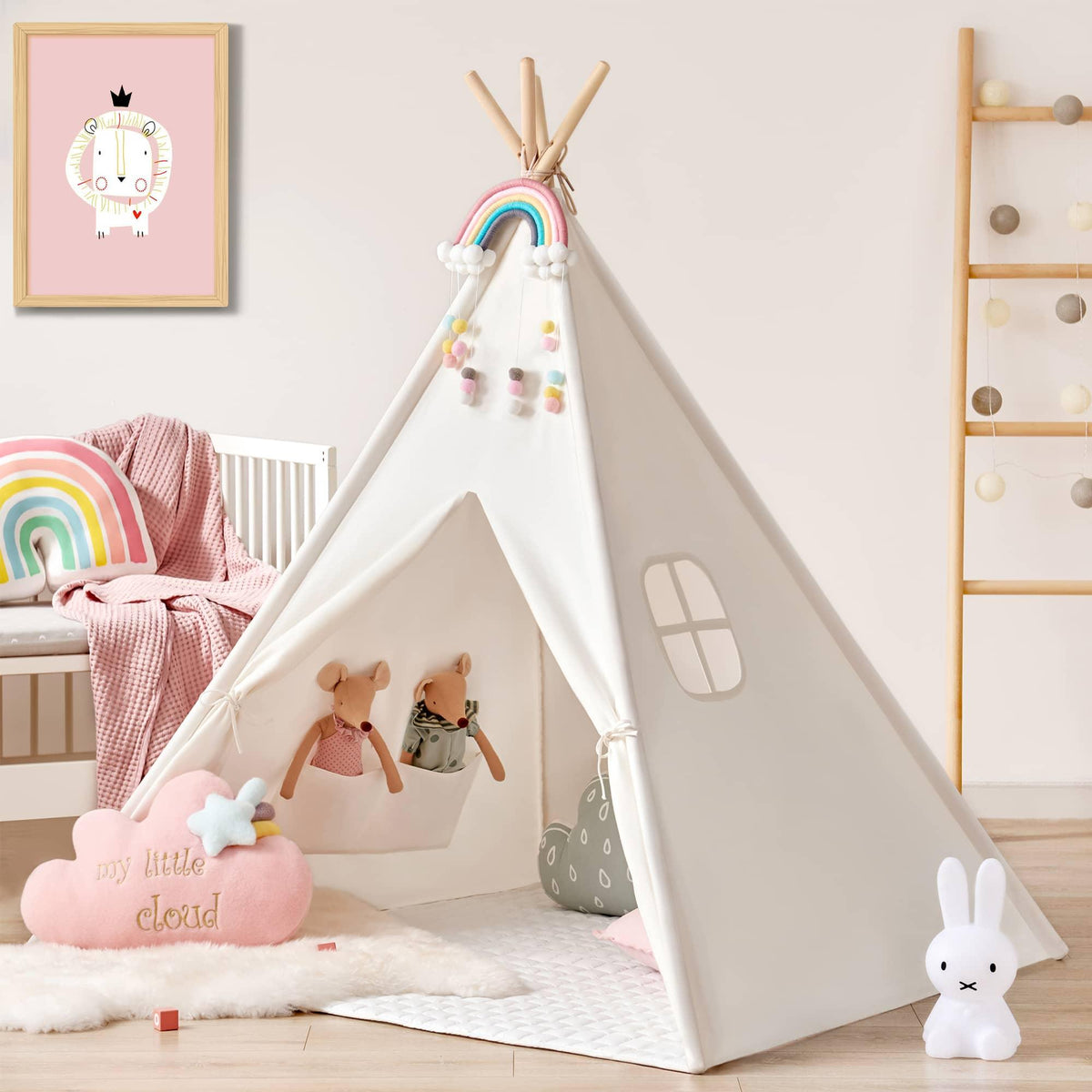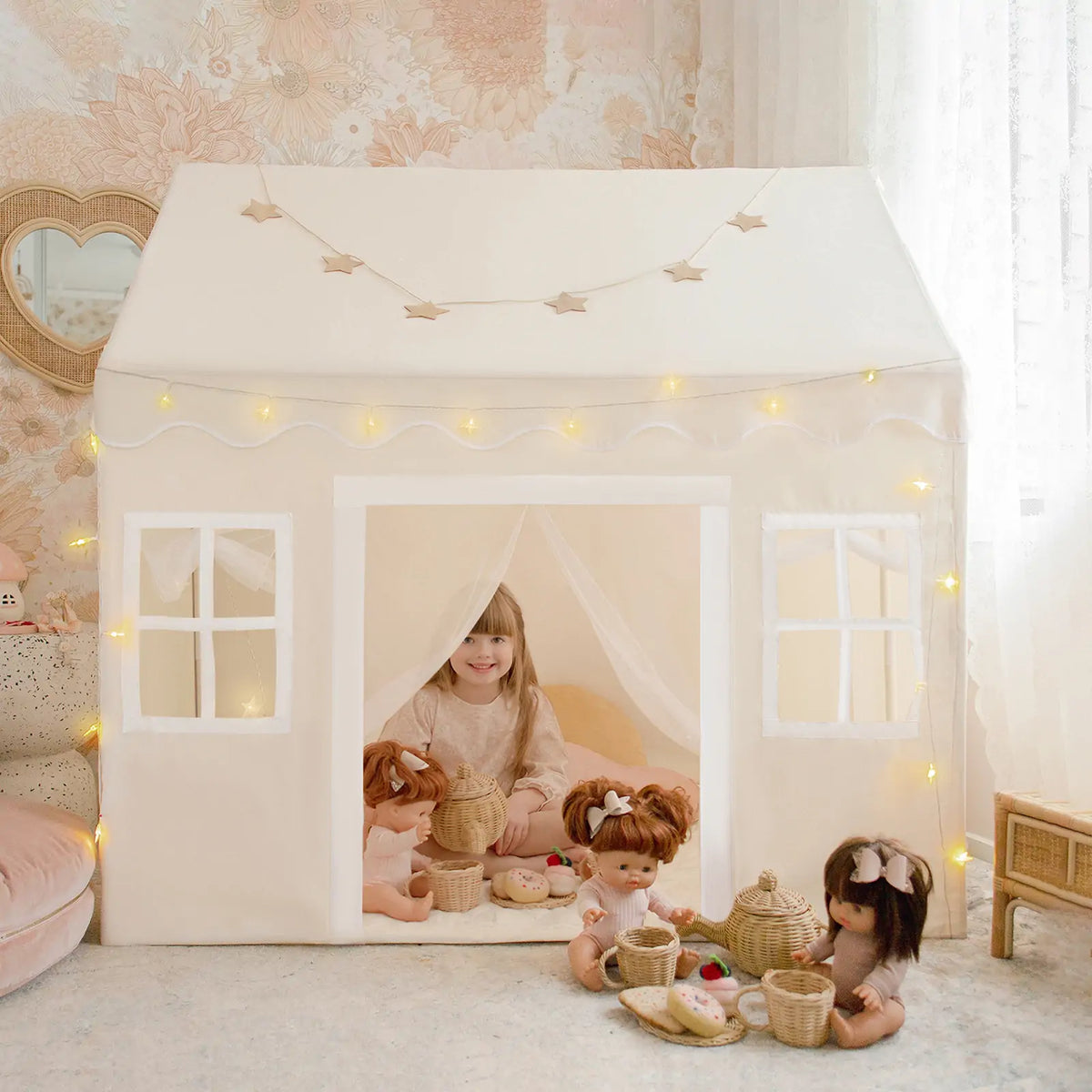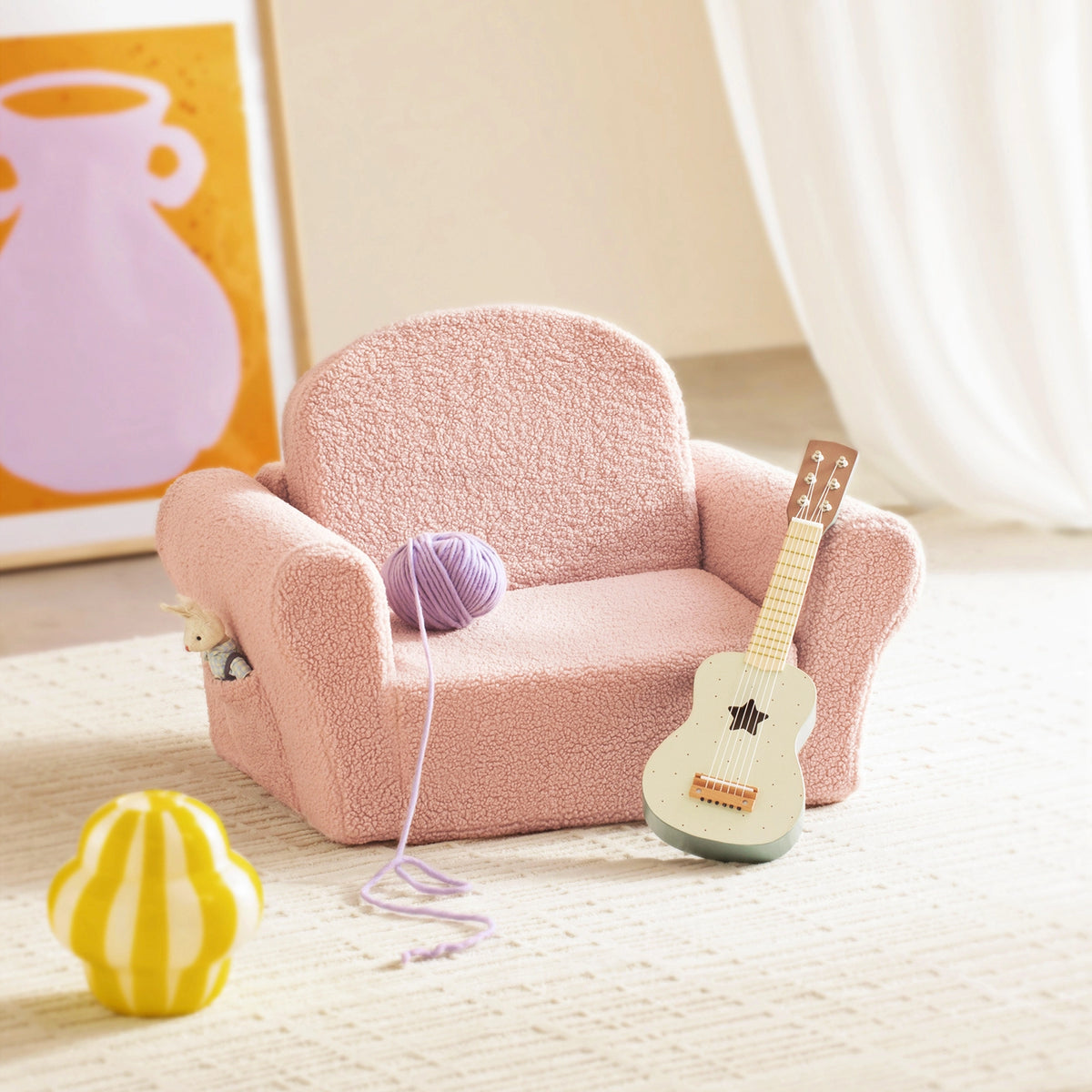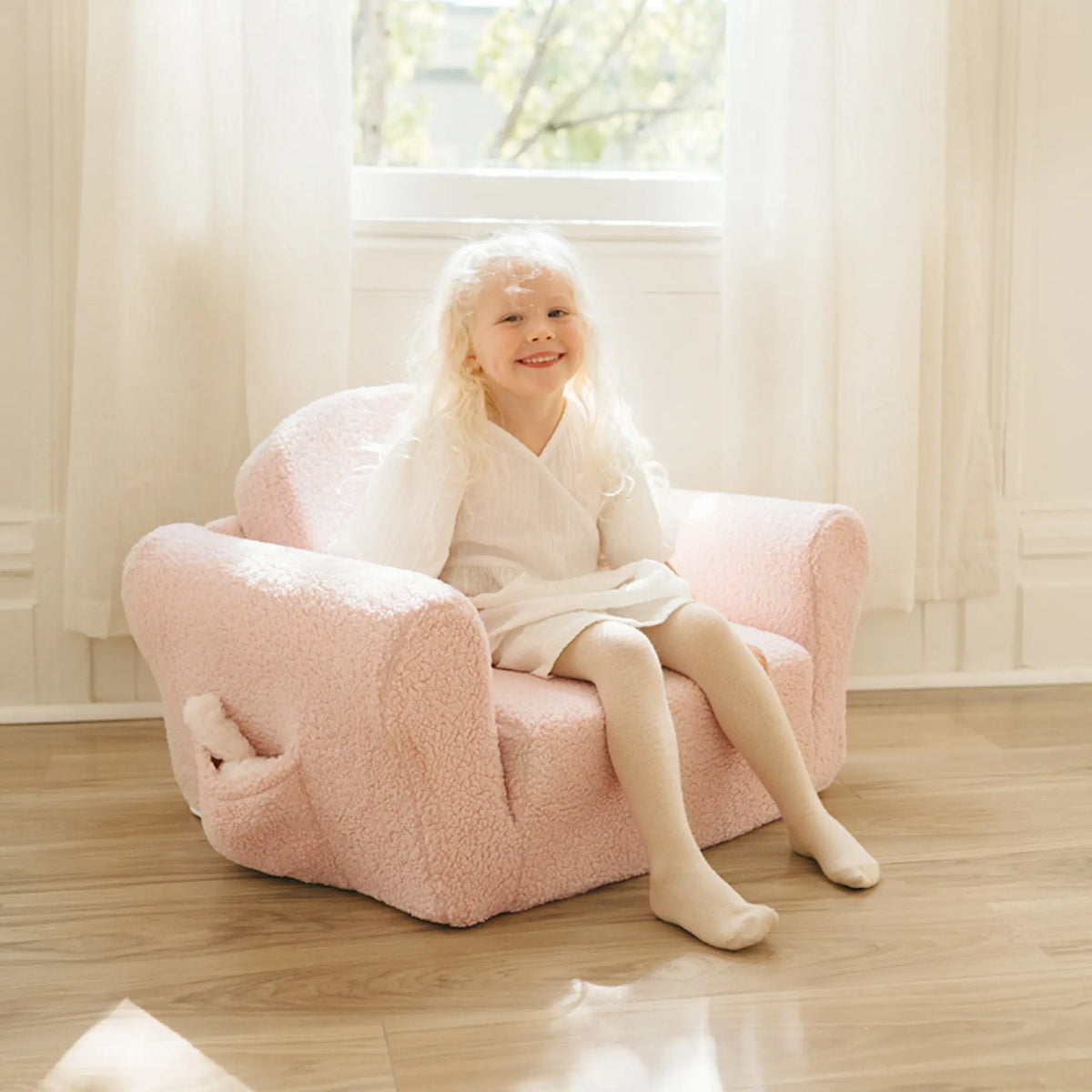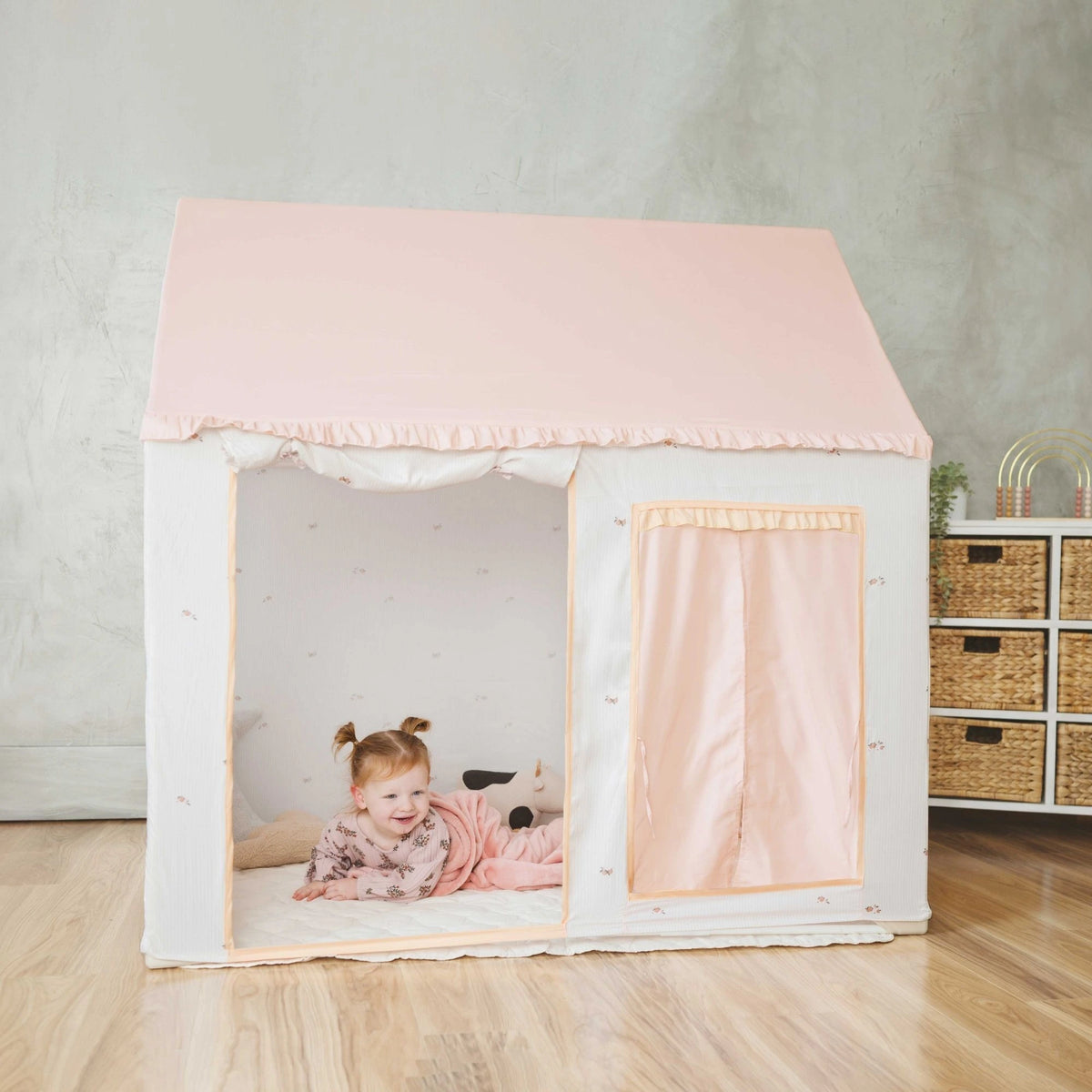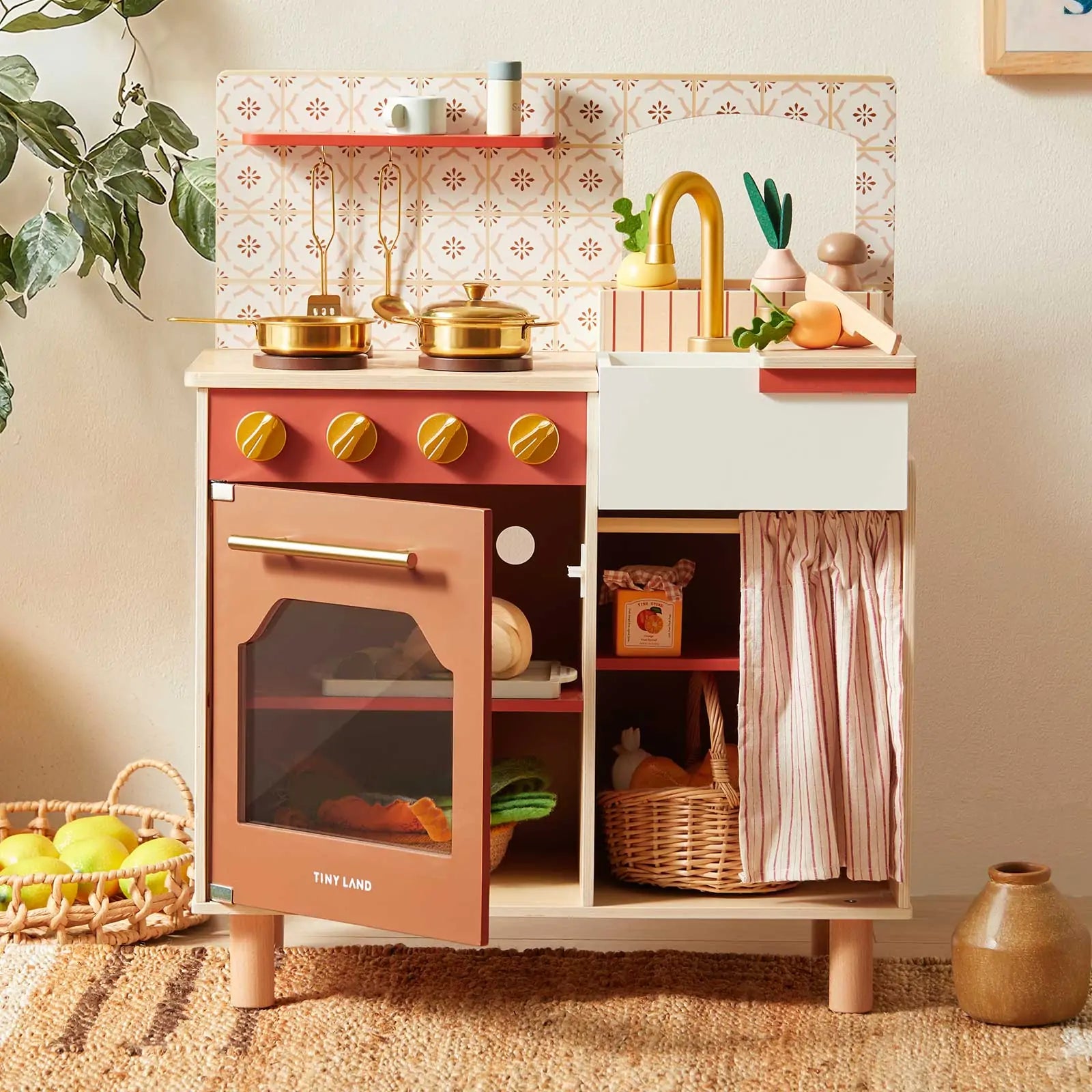When you’re shopping for the best value wooden play kitchen, you’re looking for more than just a toy. You’re looking for a piece of furniture that can hold up to toddler adventures, encourage imaginative play, and fit into your home without becoming an eyesore. Whether you’re a parent looking to spark creativity and social interaction for your little one, or a gift-giver seeking something meaningful, the right play kitchen can check so many boxes: style, safety, durability, fun.
In this post we’ll explore what “value” really means in this space, then dive into two standout models from Tiny Land that offer excellent features and smart design for families.

What Makes a Wooden Play Kitchen Truly “Best Value”?
Let’s break down the practical factors that define value — so you can evaluate confidently and know you’re making a smart decision.
--Safe, durable materials & finishes
You’ll want to check that the product is made with high-quality materials (solid wood or well-built wood-composite), and that finishes are child-safe. Many parents worry about cheap plastic toys breaking easily or having harmful coatings. The best models use non-toxic paints and sturdy craftsmanship.
--Design that encourages play (and isn’t just decoration)
Look for features that invite little hands to explore: doors that open, knobs that turn, a sink, stove, hooks for accessories, and enough room for your child to imagine being one of the little chefs. When children use a play kitchen, they’re practising real-world routines in a fun way — stirring pot, serving food, washing dishes, organizing play-items. That kind of role-play builds confidence and social interaction.
--Fits your space & lifestyle
Some families live in houses with big playrooms; others live in apartments or smaller homes and need a piece that fits well. If you have concerns around small spaces, you’ll want a model with a compact footprint that still delivers on features. Also important: storage solutions (bins, shelves) help keep the play-area tidy and get the most play out of the investment.
--Encourages social skills & imaginative play
Great play kitchens are more than solo toys — they invite siblings or friends to join in. The best-value models build social skills by letting children play together: one cooks, one serves, one cleans. That social dynamic adds tremendous value beyond the physical product.
--Long-term use, not just for toddlers
You might be shopping for a toddler, but thinking ahead is smart. The best value comes from a toy that grows with your child — extends into preschool years and beyond. If you pick the lowest price but it breaks or your child outgrows it in months, value is lost. Quality, design, and features matter.
Two Excellent Picks from Tiny Land®
Here are two top models from Tiny Land that deliver strong features, stylish design, and smart value.
Model 1: Tiny Land® Pretend Play Kitchen – Serenity Wooden Kitchen (Blue)
Features at a glance:
- Calming sky-blue / natural wood finish with golden accents, designed to blend with home décor.
- Includes realistic sink with faucet (pretend of course), two white felt storage bins, stainless‐steel utensils, bins with labels, hooks.
- Designed for “budding master chefs” to stir, organize, imagine, role-play.
Why it’s a great value:
- The design addresses two big pain-points: for parents who want a piece of furniture that also encourages play, and for buyers who live in moderate spaces (thanks to its compact footprint).
- With full pretend play features (sink, oven, cookware, storage) it offers strong “play value” for the price.
- Helps build imaginative play, invites children to explore cooking, cleaning, and organizing (which touches on social skills, fun, accessories, and food play).
- Storage bins and hooks help with tidiness and make this a smart choice for families wanting durability and organization.
Who it’s best for:
- Families in smaller homes or apartments looking for a full-featured play kitchen that doesn’t dominate a room.
- Parents who care about how the toy looks in the space — the furniture design means it won’t look out of place.
- Gift-givers wanting a well-rounded toy that offers more than basic features.

Model 2: Tiny Land® Play Kitchen with Running Water – Iconic Aqua Kitchen (Cream)
Features at a glance:
- Real-flow water system: tap, sink drain, fake waste bucket — children can wash, cook, pretend to throw away dishes.
- Includes oven, stove, microwave, coffee station, weather dial and clock for extra learning features.
- Smart storage built in: cabinets above + below, enabling children to organize accessories, pretend food, and keep the play area tidy.
Why it’s a great value:
- This model has premium features (running water system!) — so it offers a higher tier of play experience.
- For children who love playing “grown-up chef” and families who expect the toy to last through sibling use or extended seasons, this one delivers.
- Encourages more advanced pretend play, helps develop coordination and social skills, as children can play together around multiple zones (washing, cooking, serving).
- Because of the storage plus realistic features, it becomes part of the room’s play-furniture rather than a budget toy.
Who it’s best for:
- Families with more space and ready to invest for longer play-life.
- Parents looking for a toy that offers more than the basic kitchen set: children who will engage in imaginative play deeply, invite friends, play for longer durations.
- Gift-givers or daycare/home-school setups where durability and multi-child use matter.

Tips to Maximize Value and Longevity
- Make sure the kitchen is placed in a spot where children can access easily, with enough room to move around and play comfortably.
- Invest in some pretend food and accessories that complement the kitchen (pots, utensils, play dishes) so your child can dive into the experience.
- Encourage play with siblings or friends — shared play boosts social skills and keeps the kitchen in active use.
- Keep the storage bins tidy — the built-in storage in both models helps keep play-room organization on track and extends the life of the toy.
- Rotate the accessories: swapping in new pretend food or dishes every few weeks renews interest and keeps your child engaged.
- Clean regularly with a damp cloth — good maintenance will ensure the toy remains beautiful and functional for years.
- When you shop for the best value wooden play kitchen, don’t just chase the lowest price. You want a toy that:
- Is made with safe, durable materials
- Encourages imaginative play, invites children to cook, wash, serve, and organize
- Helps build social skills and gives children opportunities to play with siblings or friends
- Fits your room, home décor, and lifestyle (whether you have small spaces or a spacious play-area)
- Offers strong value over time (not just weeks of fun, but months/years of play)
Between the two models from Tiny Land® you’ve seen: one is an excellent value all-rounder, the other a premium experience built for longer lifespan and richer play. Either way, you’ll be giving your child a space to explore, create, and belong — a place where they can imagine themselves as little chefs, learning, serving, playing.
Ready to browse? Explore the full Tiny Land® play kitchen collection
FAQ
Q: What age is best for a wooden play kitchen?
A: These kitchens work best for children in the toddler to preschool age range (around 2–5 years), when they’re ready for role-play, pretend cooking, interacting with peers and exploring their environment.
Q: Are these Tiny Land® kitchens safe for little ones?
A: Yes. Both models come with child-safe, non-toxic materials, strong construction, and features built for safe use by kids. The Blue model states it uses eco-friendly MDF, plywood and New Zealand pine with water-based paint. The Running Water model highlights durable, child-safe materials and safe water-flow system.
Q: Why choose wood instead of plastic?
A: Wooden play kitchens tend to be more durable, offer a more premium look (more like real furniture), and can fit into a room in your home without looking cheap. They also tend to stand up better to repeated play by children and friends, so you get better value per use.



